- Charles Chilton
- Pages using ISBN magic links

Journey into Space
- View history
Journey Into Space is a BBC Radio science fiction programme, written by BBC producer Charles Chilton . It was the last radio programme in the UK to attract a bigger evening audience than television. [1] Originally, four series were produced (the fourth being a remake of the first), which went on to be translated into 17 languages [2] (including Hindustani, Turkish and Dutch [3] ) and broadcast worldwide (including the United States, New Zealand, Australia and the Netherlands). [3] Chilton went on to write three best-selling novels and several comic strip stories, based upon the radio series.
The first series was created in 1953, soon after Riders of the Range (a popular Western , also written by Chilton) ended its six seasons on the BBC Light Programme . Michael Standing, then Head of the BBC Variety Department, asked Chilton if he could write a sci-fi programme, and Journey to the Moon (later known as Operation Luna ) was the result. [1] Each half-hour episode would usually end with a dramatic cliffhanger , to increase the audience's incentive to tune in to the next episode.
The original magnetic recordings of the show were erased shortly after broadcast, and for several decades, it was believed that no recordings of the show still survived. However, in 1986, a set of mis-filed Transcription Service discs (produced for sale to overseas radio stations) were discovered, containing complete copies of the three original series (more accurately, the surviving version of the first season is a cut-down remake of the original, produced for the Transcription Service during the 1950s). This discovery enabled the BBC to begin re-broadcasting the show in the late 1980s, and release copies of the show, first on audio cassette, and more recently on CD and internet download.
Fans of Journey Into Space include Colin Pillinger , [4] Kenny Everett , [5] John Major , [5] Stephen Hawking , [5] Miriam Margolyes [5] and former Doctor Who producer Philip Hinchcliffe . [6]
- 1 The main characters
- 2.1 Journey to the Moon / Operation Luna
- 2.2 The Red Planet
- 2.3 The World in Peril
- 3 Critical reaction
- 5 Sound effects
- 7 Comic strips
- 8 Discovery of Transcription discs
- 9.1 The Return from Mars
- 9.2 Frozen in Time
- 9.3 The Host
- 10.1 Audiobooks
- 11 Other related series
- 12 External links
- 13 References
The main characters [ ]
The four main characters appear in all the original series, as well as the later special episodes:
Guy Kingsley Poynter (who played Doc) had worked with Charles Chilton before Journey Into Space , and Chilton once commented that Poynter "was a very good poetry reader". [1] Chilton also observed that Bruce Beeby was like his character Mitch, and was "always blowing his top". [1]
David Kossoff asked Chilton if his character (the ship's radio operator) could be called Lemuel (a name he loved), and Chilton shortened the name to Lemmy. Chilton based Lemmy's character on himself, since he had been a radio operator in the RAF . [7] Originally, Chilton had chosen John Glen to play Jet, but later decided to use Andrew Faulds instead, because Chilton's secretary fancied him. [7]
David Jacobs ' ability to play a wide variety of characters, each with his own distinctive voice, resulted in him playing 22 different characters during the course of Journey Into Space . He used to mark up his script using different colour pencils, to help him remember what each character was supposed to sound like. In episode 1 of The Red Planet , Jet is interviewed by a group of newspaper reporters, all of whom were played by David. [7]
Light-hearted pranks were often played on David Jacobs just before a recording session was about to begin. On one occasion, Andrew Faulds poured a jug of water inside his trousers, totally soaking him, and he "did the rest of the programme in a raincoat!" [1] On another occasion, some of the actors smeared mustard on his lip microphone, causing him some difficulties during the recording session. [7]
The original three series [ ]
Journey to the moon / operation luna [ ].
Initially, the first series was simply known as Journey Into Space , with the subtitle A Tale of the Future added by the Radio Times , but within the BBC it became known as Journey to the Moon . [1] The series was set in 1965 (the year in which Chilton believed humans would first walk on the Moon [7] ), and was first broadcast in 1953–1954 on the BBC Light Programme , which later became BBC Radio 2 . The series was originally intended to have 12 episodes [1] (one source claims 8 episodes [2] ), and 5.1 million people tuned in to the first episode, but the first four episodes (which took place on Earth) didn't prove very popular, and the audience soon shrank to less than 4 million. [1] However, once the rocket set off for the Moon in episode 5, the audience reaction was much more favourable. The series was extended to 18 episodes, and by the time the final episode was broadcast, 8 million people were tuning in. [1]
In 1958, Journey to the Moon was re-recorded for the BBC Transcription Services (retitled as Operation Luna ), because the original recordings had been erased. [1] The first four episodes of the original series were omitted, and episodes 12 and 13 were merged into a single episode. [1] Today, the only surviving recording from Journey to the Moon is a 5-minute extract from the final episode. [1]
In addition to the main characters , other characters in Journey to the Moon included: [1]
Other characters in Operation Luna included: [1]
(*) Alan Keith (born Alec Kossoff) was the brother of David Kossoff, who played Lemmy.
Chilton wrote episode 8 of Journey to the Moon in response to a challenge from a TV producer, who considered the success of the series to be "a fluke". The producer challenged Chilton to write an episode "that could not be played equally well on television", and Chilton succeeded – a large proportion of the episode takes place in total darkness. [7] During the episode, Jet reads to the rest of the crew by torchlight from The First Men in the Moon by H. G. Wells , the only work of fiction carried on board the ship. [7]
Andrew Faulds' adopted uncle, Hector MacPherson, was an astronomer, and wrote a book called Practical Astronomy . Chilton bought a copy of the book, which first sparked his interest in astronomy, and later led him to write Journey Into Space . In episode 7 of Journey to the Moon , Jet's childhood flashback features his great uncle Hector, who was based on Hector MacPherson. [7]
In November 1957, Chilton wrote an episode of the BBC Schools Radio science series Our Own and Other Worlds , titled A Trip to the Moon , which featured edited material from episodes 5 and 6 of Journey to the Moon . [8]
The table below indicates the correspondence between the episodes of Journey to the Moon and Operation Luna . [1]
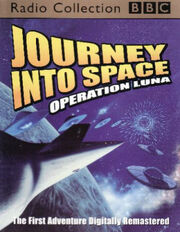
The Red Planet [ ]
Journey Into Space featured on the cover of the Radio Times .
The second series, The Red Planet , followed the adventures of the crew in their first attempt to reach and explore Mars . Several new characters were introduced, the most notable of which were Frank Rogers and James Edward Whitaker, the two original crewmen of freighter #2. Chilton took the name Whitaker from a copy of Whitaker's Almanack which was sitting on his desk. [3]
In addition to the main characters , other characters in The Red Planet included: [3]
(*) Married to Bruce Beeby, who played Mitch.
The most memorable catchphrase from this series was "Orders must be obeyed without question at all times", which was often repeated by many of the 'conditioned' characters, especially Whitaker. Episode 19 of the series rated a 17% audience share, whereas the newsreel broadcast simultaneously on BBC TV had an audience share of 16%. This was the last time that a radio show achieved a higher rating than its TV opponent. [3]
During the first broadcast of this series, the Radio Times featured Journey Into Space on its cover, showing Andrew Faulds as Captain "Jet" Morgan. His spacesuit (which was used by several of the cast members for publicity photos) was a prototype being developed in Britain at the time. [3]
During the recording of The Red Planet , Guy Kingsley Poynter was also starring in The Teahouse of the August Moon at Her Majesty's Theatre . [3]
The British Empire Exhibition was referred to throughout the episodes.
In the table of episodes below, the numbers marked with # refer to the numbered freighters of the Mars fleet.
The World in Peril [ ]
The third series was a direct continuation of the story begun in The Red Planet , and followed Jet Morgan and his crew's return to Mars in an attempt to avert the impending Martian invasion.
In addition to the main characters , other characters in The World in Peril included: [8]
During the recording of The World in Peril , Alfie Bass was also starring in the revue The Punch Bowl at the Duke of York's Theatre . [8]
Critical reaction [ ]
Public reaction to the show was mixed. Some comments received by the BBC described the show as "a first class affair" and "the best serial for ages". [1] After episode 5 of Journey to the Moon was first broadcast, the Daily Express commented: Template:Quote Midway through the original broadcast of The Red Planet , a BBC Audience Research Report indicated that the series Template:Quote However, others commented that the plot often featured scientific inaccuracies, [1] even though Chilton had received technical advice from Flight Lieutenant Roger Burton [1] and Kenneth Gatland of the British Interplanetary Society . [8] One reviewer in the Radio Times issue of 4 February 1955 commented that: Template:Quote Chilton has admitted that he is not a science-fiction writer, astronomer, or scientist, and that his "pursuit of astronomical studies is clumsy and very amateurish". [3] He often "worked very late to deadline", sometimes not starting to write an episode until two days before recording. [1]
Journey Into Space remains popular today, thanks to the discovery of mis-filed recording of the show, which enabled the BBC to begin re-broadcasting the show from the late 1980s onwards. Template:Quote
Van Phillips composed and conducted the music for all three series. [2] The music was initially recorded beforehand, and played from acetate discs during the recording sessions. [1] Later, an eight-piece orchestra was actually present in the studio, and played the music live. [9] Phillips liked the sound of the clavioline , and obtained one for use during Journey Into Space . He composed music especially for it, and it was "bolted onto the piano" in the studio. [9] Titles of his compositions include "A Picture of the Universe", "Rocket Away", "Music for Outer Space", [1] "The Red Planet", "Crossing the Plains", [3] and "Sunrise". [8]
In 1955, Decca released a 78rpm record of the Journey Into Space theme, performed by Frank Weir and his orchestra (catalogue number F.10435), [3] and sheet music of a piano solo of the theme was also published. In 1978, the recording was included on the 33⅓rpm BBC compilation record BBC Space Themes (catalogue number REH 324), [3] and in 2005, Vocalion/Dutton Laboratories included it on their digitally remastered compilation CD Presenting Frank Weir And His Saxophone (catalogue number CDLK 4266).
In Journey to the Moon , Lemmy occasionally provided musical entertainment for the crew on his mouth organ, playing songs such as "Knocked 'em in the Old Kent Road" and "My Old Dutch". [1] Excerpts of popular music were often used during the episodes, and sometimes played an important role in the plot. In episode 8 of Journey to the Moon , an excerpt from "Honeymoon on a Rocket Ship" by Hank Snow and The Rainbow Ranch Boys is heard by the crew on the ship's radio. [1] "When It's Night Time In Italy", by James Kendis and Lew Brown , was an important part of episodes 7 and 8 of The Red Planet . [3] Other popular music used in The Red Planet included: [3]
- "Flat Foot Floogie", by Bulet Galliard , Leroy Stewart and Bud Green , performed by the Benny Goodman Orchestra
- The theme tune to the Billy Cotton Band Show
- "Somebody Stole My Gal", by Lee Wright
- "Friends and Neighbours", by Marvin Scott and Malcolm Lockyer
- "Selection of Hebrew Dances Part 2", by Ambrose and his orchestra
- Banjo music by Billy Bell
The World in Peril featured a 'rebel song', sung by the 'conditioned' men aboard the Martian asteroids. This song was actually a musical arrangement of The Green Hills of Earth (a poem taken from Robert Heinlein 's short story of the same name), performed by the George Mitchell Choir . [8] In the final episode of The World in Peril , Chopin Opus 34: No. 2: Valse brillante in A minor is heard playing over the radio.
Sound effects [ ]
A variety of sound effects were used in the episodes, and played a major role. In addition to basic sounds, such as feet walking along a corridor or tunnel, more advanced effects were created, such as the mysterious haunting 'music' which is heard over the rocket's radio in many episodes of Operation Luna .
The most distinctive effect was the dramatic rocket take-off, which was played at the beginning of each episode, and whenever necessary during the episodes. This was actually a recording of a jet aircraft at Heathrow airport . [9] Often, this would be followed by a slowly ascending tone (representing the rocket accelerating), which "was actually a recording of a thermionic valve played through an echo chamber down at the Physical Research Laboratory at Kingston ". [9] Other sound effects were created at Battersea Power Station , and the sound made by the televiewer on board Luna was actually a naval ASDIC . [1]
The BBC had an echo chamber in the studio, which was greatly utilised during the episodes. Whenever the crew were in contact by radio with Earth control, or another distant location, the echo chamber would be applied to the voice of the remote character. Various sound effects were also created "live" in the studio. For example, in episode 8 of Journey to the Moon , the crew hear a mysterious tapping on the outside of the ship; this effect was created "by tapping the needle of the gramophone pickup head, and playing that through an echo chamber". [9]
Template:Expand section Chilton wrote three Journey Into Space novels, one for each of the three original series. The novels were originally published in hardback by Herbert Jenkins, and later in paperback by Pan . The first novel, simply titled Journey Into Space , was first published in 1954, and told the story of Journey to the Moon . [1] This was the first book that Chilton had ever written. [1] Chilton's novel of The Red Planet was first published in 1956, [3] followed by The World in Peril in 1960. [8]
On 8 May 2008, BBC Audiobooks released a complete and unabridged audiobook of the first novel, read by William Hope . [10]
Comic strips [ ]
In 1956, the Junior Express comic began publishing Journey Into Space comic strips , with scripts by Charles Chilton and artwork by Italian artist Ferdinando Tacconi . [8] The first adventure, titled Jet Morgan in Planet of Fear , was a 35-episode sequel to The World in Peril . Tacconi spent some time with Chilton absorbing the atmosphere of the saga, and portrayed (in full colour) the radio actors' likenesses to match the clever dialogue.
The story was continued in 1957 in the 32-episode adventure, Shadow over Britain . In March 1957, Bruce Cornwall took over from Tacconi as artist, and Chilton lost his enthusiasm for the cartoon strip; thereafter it became a contractual chore for him. Terence Patrick took over from Cornwall in April 1957, and by the time the third adventure began ( The World Next Door ), Chilton was no longer writing the scripts.
The 1956 Express Weekly annual contained a short black & white comic strip called Jet Morgan and the Space Pirates , illustrated by Tacconi. The 1957 annual included a short story called Jet Morgan and the Space Castaway , written by Chilton and illustrated by Cornwall.
Discovery of Transcription discs [ ]
The programmes were recorded in the studio on 15 ips magnetic tape, and were later copied onto 33⅓ rpm 16-inch coarse groove transcription discs for the BBC Transcription Services (except for Journey to the Moon episodes). [1] The master tapes were erased three months after broadcast, in accordance with BBC policy at the time. The Transcription discs were sold overseas, and their fate was unknown, so for many years it was believed that all the episodes had been lost forever. [11]
However, in 1986, a set of mis-filed Transcription discs were found by Ted Kendall, a BBC recording engineer, which turned out to be copies of Operation Luna , The Red Planet and The World in Peril . The BBC no longer possessed a suitable turntable on which to play the discs, but Kendall eventually managed to obtain an EMT 927 turntable. To clean the discs, he soaked them in warm water containing Fairy Liquid , brushed them with a goats-hair brush, and dried them using kitchen towels. [11]
Kendall then transferred the recordings to magnetic tape, removing "clicks" from the sound using a device which he designed and built, called the Mousetrap (or Front End). He removed more severe clicks after the transfer, by scraping the oxide off the magnetic tape in appropriate places. [11]
The BBC took the opportunity to re-broadcast all three series on Radio 2 , beginning with Operation Luna in 1989, [1] followed by The Red Planet in 1990 [3] and The World in Peril in 1991. [8] Abridged versions of the three series were also released on audio cassette. In 1998, Kendall digitally remastered the recordings for new abridged releases on audio cassette, and in 2004, the unabridged remastered recordings began to be released on CD and internet download. The three series have also been broadcast on BBC 7 .
Special episodes [ ]
The return from mars [ ].
Template:Expand section In 1981, Radio 4 's Saturday Night Theatre slot ran a special science fiction season, featuring stories such as The First Men in the Moon , The Chrysalids , A Fall of Moondust and The Technicolor Time Machine . Charles Chilton was asked to write a new one-off 90-minute episode of Journey Into Space for this slot, and The Return from Mars was the result. The plot was an approximate continuation from the end of The World in Peril (one major contradiction being that the crew return aboard Discovery, which was left behind on Mars in The World in Peril ). After more than thirty years in space, and missing presumed dead, the crew finally return to Earth. The episode was broadcast on March 7, 1981.
In addition to the main characters , other characters in The Return from Mars included: [8]
Frozen in Time [ ]
A new episode based on the original series, with David Jacobs finally taking the role of Jet Morgan (who has aged while the rest of his crew were in suspended animation due to a systems malfunction). Charles Chilton wrote the one hour play which was set in the year 2013. Broadcast on Radio 4 on Saturday April 12, 2008. This was released by BBC Audio in January 2009. ISBN 9781408401040
Music by David Chilton; producer/director Nicholas Russell-Pavier.
The Host [ ]
A further new episode based on the original series by Chilton, written by Julian Simpson starred Toby Stephens as Jet Morgan. Another one hour play, it was set in the year 2079. Broadcast as The Saturday Play on Radio 4 on Saturday June 27, 2009.
BBC releases on audio cassette and CD [ ]
Audiobooks [ ].
Currently, only the first novel has been released as an audiobook. [10]
Other related series [ ]
Chilton followed Journey Into Space with two other radio series – Space Force in 1984 and Space Force II in 1985 – which were based on a similar theme. Indeed, Space Force had originally been intended as a new Journey Into Space serial, following on from The Return from Mars , until relatively late in the day, so its four central characters are clear 'doubles' for the Journey Into Space team. In the version that was actually recorded and transmitted, one character (Chipper Barnett) refers to his grandfather Lemmy.
External links [ ]
The BBC releases of the three original series on CD and internet download are accompanied by 16-page booklets with text written by Andrew Pixley. These booklets provide detailed information about the series, and are available online:
- BBC booklet for Operation Luna
- BBC booklet for The Red Planet ( alternative link )
- BBC booklet for The World in Peril
Other links:
- Two-minute clip of Operation Luna
- www.journeyintospace.co.uk – An excellent website about the series
- Zeta Minor CD Review: Operation Luna – A very comprehensive review of Operation Luna and its new CD boxset
- Zeta Minor CD Review: The Red Planet – A very comprehensive review of The Red Planet and its new CD boxset
- Journey Into Space Appreciation Society – A Facebook group
- Journey into Space - The World in Peril - not on CD?
References [ ]
- ↑ 1.00 1.01 1.02 1.03 1.04 1.05 1.06 1.07 1.08 1.09 1.10 1.11 1.12 1.13 1.14 1.15 1.16 1.17 1.18 1.19 1.20 1.21 1.22 1.23 1.24 1.25 1.26 1.27 Booklet accompanying the 2004 release of the Operation Luna CD boxset by BBC Audiobooks
- ↑ 2.0 2.1 2.2 Summary by Charles Chilton, Operation Luna audio cassette boxset, released by BBC Worldwide Ltd, 1996
- ↑ 3.00 3.01 3.02 3.03 3.04 3.05 3.06 3.07 3.08 3.09 3.10 3.11 3.12 3.13 3.14 Booklet accompanying the 2005 release of The Red Planet CD boxset by BBC Audiobooks
- ↑ Template:Cite web
- ↑ 5.0 5.1 5.2 5.3 Template:Cite web
- ↑ Voice-over commentary on the BBC DVD " The Robots of Death " (1977, 2000)
- ↑ 7.0 7.1 7.2 7.3 7.4 7.5 7.6 7.7 Journey Into Space... Again , BBC Radio 4 , 20 July 1999
- ↑ 8.0 8.1 8.2 8.3 8.4 8.5 8.6 8.7 8.8 8.9 Booklet accompanying the release of The World in Peril internet download
- ↑ 9.0 9.1 9.2 9.3 9.4 Interview with Charles Chilton, Round Midnight , BBC Radio 2 , 1989
- ↑ 10.0 10.1 Template:Cite web
- ↑ 11.0 11.1 11.2 Template:Cite web
- 1 Gorretti Slavin
- 2 Katie Hims
- 3 Andrew Wincott
- Show Spoilers
- Night Vision
- Sticky Header
- Highlight Links

Follow TV Tropes
http://tvtropes.org/pmwiki/pmwiki.php/Radio/JourneyIntoSpace
Radio / Journey into Space
Edit locked.

It was the last British radio programme to achieve higher ratings than its television rival. At 19:30 on January 10, 1955, the penultimate episode of The Red Planet received a 17% audience share in comparison to 16% for the daily newsreel on the BBC Television Service (now BBC One).
The original series consists of:
- The Red Planet (1954-5)
- The World in Peril (1955-6)
Several further one-off instalments were produced after the original run:
- The Return from Mars (1981), set in 2026
- Frozen in Time (2008), set in 2013
- The Host (2009), set in 2079
The main characters are:
- Andrew "Jet" Morgan: Stiff upper lipped captain and The Hero .
- Stephen "Mitch" Mitchell: the hot-headed Australian engineer and The Lancer .
- Doc Matthews: The McCoy and The Heart . Canadian medical officer. Much of the series' exposition was delivered through Doc's diary.
- Lemuel "Lemmy" Barnet: Cockney radio operator, The Everyman .
Notable tropes include:
- Absent Aliens : Played with, even though the series at first merely appears to a fairly realistic drama about the struggle to achieve a manned moon-landing.
- Alien Abduction : In The Red Planet , the Martians have abducted many humans from Earth since at least 1879. The abductees include Bill Webster (who was taken in 1910), James Edward Whitaker (who was taken in 1924), John and Martha Bodie and a dingo hunter (who were taken in 1939) and the flying doctor (who was taken in 1956).
- Alien Invasion : In The Red Planet , the crew learns that the Martians intend to invade Earth in 1986. In The World in Peril , the Discovery returns to Mars in 1972 and the formerly conditioned Frank Rogers tells Doc and Mitch that the Martian invasion fleet has already been launched.
- Aliens in Cardiff : In The World in Peril , a Martian spaceship crash-lands in the Lake District. Three other spaceships land in remote areas of Australia , India and South America .
- Aliens Never Invented the Wheel : In Journey to the Moon / Operation Luna , the Time Travellers have no concept of music.
- In The Return from Mars , the Discovery is caught in a time warp after leaving Mars at the end of The World in Peril and eventually returns to Earth in 2026, decades after they left.
- In Frozen in Time , the Ares , crewed by Jet, Lemmy, Doc and Mitch, left Earth on June 8, 1973 and began a mission of exploration around The Solar System .
- The Host also takes place in a different continuity from the original series. The Ares was launched approximately 100 years later, at some point between 2071 and 2079.
- In Journey to the Moon / Operation Luna , the Time Travellers attempted to colonise Earth thousands of years ago.
- In The Red Planet , the Martians were a race of giants and their visit to Earth gave rise to myths about giants, who were often believed to live in the sky.
- Arc Words : In The Red Planet , people who have been conditioned by the Martians often say "Orders must be obeyed without question at all times." The phrase is repeated in Episode 14 of The World in Peril in which Doc sardonically notes that he has heard it before.
- Audience Surrogate : Lemmy does not possess very much scientific or engineering knowledge. As such, he often needs things explained to him by Jet, Mitch and, to a lesser extent, Doc.
- Bizarre Alien Psychology : In Journey to the Moon / Operation Luna , the Time Travellers cannot kill any living creature.
- Bizarre Human Biology : In The Red Planet and The World in Peril , the Martians altered the biology of many humans so that they could survive in the Martian atmosphere.
- Brain Uploading : In The Host , J.J. Andreev's personality was coded onto the computer of the Vardis after his death in 2071.
- Jet: "Good heavens!"; "Good grief!"; "Quiet, Lemmy!" (when chastising Lemmy for saying something foolish or unhelpful)
- Lemmy: "Oh, blimey!"; "Do me a favour!"/"Turn it up!"(when arguing with a crewmate); "Yes, Jet"/"No, Jet" when chastised by Jet)
- Doc: "Land's sakes!"
- Mitch: "Streuth!"
- Character Narrator : The series is narrated by Doc through the medium of his diary.
- The Red Planet was the only entry in the original series to feature women in the cast: Miriam Karlin played an hallucination of Lemmy's mother in Episode 13 while Madi Hedd played Martha Bodie in Episodes 15 and 16.
- Cassia is the only female character to appear in The Return from Mars .
- Edie Harper is the only female character to appear in The Host .
- Cliffhanger : Discounting the final episode of each season, every episode ends in a cliffhanger.
- In The Red Planet , the flying doctor is one of the few humans on Mars who does not believe that he is still living a perfectly normal life on Earth. He willingly participates in the Martian plan to invade Earth in 1986.
- In The World in Peril , the Lunar Controller has been collaborating with the Martians since his abduction several years earlier.
- The space programme's long-term goal is to establish colonies on The Moon , Mars and Venus . In Journey to the Moon / Operation Luna , Mitch believes that the construction of a lunar colony will be a matter for their children or grandchildren. However, The Red Planet reveals that there is already a lunar colony by 1971. In Journey to the Moon / Operation Luna , Jet experiences a premonition of the launch of a ship bound for Venus on October 30, 1965.
- In The Host , there is a research station in orbit of Enceladus, one of Saturn 's moons .
- Comm Links : In The Return from Mars , the Talians use wrist communicators.
- Compressed Adaptation : Operation Luna , the remake of Journey to the Moon , had only 13 episodes compared to the original's 18. It omitted the original's first four episodes set on Earth and combined its 12th and 13th episodes into one episode.
- The Luna in Journey to the Moon / Operation Luna .
- The Discovery in The Red Planet and The World in Peril .
- Cyberspace : In The Host , Jet enters a virtual reality environment in order to confront the personality construct of J.J. Andreev.
- Deadpan Snarker : Lemmy. For example, Time Traveller: Have we harmed you up to now? Lemmy: Oh no - apart from knocking us right out of our own time into heaven-knows-where, you haven't harmed us at all!
- Dramatic Space Drifting : In The Red Planet , Mitch almost drifts off into space but he is rescued by Jet and Lemmy.
- Dreaming of Times Gone By : In The Red Planet , Whitaker's presence causes Jet to have a dream about visiting the British Empire Exhibition with Whitaker in 1924. He hears the 1923 novelty song "When It's Night Time in Italy, It's Wednesday Over Here" by James Kendis and Lew Brown and sees London as it existed in 1924 as opposed to how it exists in his own time of 1971. Prior to this, Jet had never heard of either the Exhibition or the song.
- Energy Beings : Discussed in Journey to the Moon / Operation Luna . Lemmy theorises that the Time Travellers may not have physical bodies.
- The Evils of Free Will : In The World in Peril , the conditioned Harding tells Jet that it is in Earth's interest to be conquered as all of humanity's societal problems will cease to exist when choice is removed from the equation. The Martian similarly argues that humans are inherently destructive and that conditioning them en masse will be beneficial.
- Exposed Extraterrestrials : In Journey to the Moon / Operation Luna , the Time Travellers do not wear clothes due to their armoured shells.
- Failed Future Forecast : In Frozen in Time , which was produced in 2008, it is mentioned that the Ares embarked on a mission to explore The Solar System on June 8, 1973 and had reached Neptune by 1977.
- Faster-Than-Light Travel : Space travel is limited to the inner planets and takes a very long time, until the Time Travellers show up in Journey to the Moon / Operation Luna .
- First Contact : In Journey to the Moon / Operation Luna , the Luna crew makes first contact with the Time Travellers on The Moon in November 1965.
- Floating Continent : In The World in Peril , each of the Martians' asteroid ships are populated by hundreds of people and are essentially self-sustaining flying cities.
- Four-Temperament Ensemble : Jet is sanguine, Mitch is choleric, Doc is melancholic and Lemmy is phlegmatic and/or supine.
- In Frozen in Time , Jet, Lemmy, Doc and Mitch were placed in the suspended animation pods of Ares on May 10, 1977. Pod 4, containing Jet, failed after several weeks. As such, Jet was forced to operate the ship alone for almost 36 years until the other three crewmembers were revived on March 9, 2013.
- In The Host , the Ares crew are awakened from suspended animation when the ship receives a Distress Call from the Vardis on May 17, 2079. Edie Harper later tells the crew that the other 47 crewmembers of the Enceladus research station entered stasis two years earlier after their funding was cut off.
- In Journey to the Moon / Operation Luna , the Time Travellers encountered a vicious, violent species on Earth: early humans. They're not convinced that modern humans are any better.
- In The World in Peril , it is revealed that the Martians had previously attempted to settle on Earth. They found the inhabitants too violent and were driven off.
- Humans Are Ugly : In Journey to the Moon / Operation Luna , the Time Traveller tells the crew that his people were originally shocked by their appearance and that it took that quite some time to get used to it.
- Humorless Aliens : In Journey to the Moon / Operation Luna , Jet doubts that the Time Travellers have a sense of humour.
- In The Red Planet , Doc and Peterson are the only members of the Martian expedition who are immune to the Martian conditioning. Doc tells Lemmy that the Director of the Department of Hypnotic Medicine was unable to place him in an hypnotic state when he attended medical college.
- In The World in Peril , Jet and Lemmy meet Paddy Flynn, who was likewise immune to the Martians' attempts at mind control.
- Intelligent Gerbil : In Journey to the Moon / Operation Luna , the Time Traveller resembles a bipedal armadillo with a blue and red face, which Mitch compares to that of a mandrill. Doc estimates that he is seven foot tall. However, Jet says nine feet and Mitch says twelve feet.
- In Journey to the Moon / Operation Luna , Jet, Lemmy, Doc and Mitch travel from the Earth to The Moon in 1965.
- In both The Red Planet and The World in Peril , the crew journey from The Moon to Mars , first in 1971 and then again in 1972.
- Invisibility : Discussed in The World in Peril . Lemmy speculates that the Martians may be invisible. Mitch describes this as "about the worst suggestion made to now."
- Mitch, especially in Operation Luna . His short fuse and over-protectiveness of his self-designed and constructed spaceship and lunar mission makes him downright unreasonable towards his crewmates, particularly Lemmy, whom he even describes as "psychologically unsuitable" and "a psychological misfit" in Episode 1. He mellowed a great deal throughout the second and third seasons.
- Jet Morgan himself can also be one to a lesser extent. Although a very capable leader and ultimately concerned for his crew's safety, he has a tendency to be overly impatient and occasionally insensitive. He is often condescending towards Lemmy. For instance, in The Red Planet : Lemmy : (upon waking from an undescribed nightmare) Oh, thank goodness. That was about the most horrible dream I ever had! Jet : But it was only a dream! Now pull yourself together and get down out of that bunk. I've got work for you to do!
- Laser-Guided Amnesia : This trope is given a Time Travel variation in Journey to the Moon / Operation Luna . Once they return to their own time, the Luna crew lose all memory of everything that happened after they saw the Time Travellers' fleet on the dark side of The Moon . However, both Lemmy and Doc experience a sense of Déjà Vu .
- Last of His Kind : The Martian in The World in Peril .
- Long-Lived : In The World in Peril , it is mentioned that Martians have a lifespan of more than 300 years.
- Mass Hypnosis : In The World in Peril , the Martians plan to conquer Earth by having the conditioned Professor Brewer hypnotise the vast majority of humanity over the television. Those who are already conditioned will be immune to its effects while those who do not watch the broadcast will be either conditioned or killed. In 1966, Professor Brewer attempted to hypnotise all of the viewers in the Commonwealth as a sort of trial run.
- MegaCorp : In The Host , large parts of Earth are controlled by huge corporations in 2079. There are only a few remaining governments.
- Mental Time Travel : In Journey to the Moon / Operation Luna , the presence of the Time Travellers causes Jet's mind to travel back in time to his childhood in Edinburgh when his great-uncle Hector was tutoring him about The Moon .
- In The Red Planet , James Edward Whitaker, who was abducted and conditioned by the Martians in 1924, serves as their spy in the Discovery expedition.
- In The World in Peril , the crew discover that the Lunar Controller has been working with the Martians all along. He used his influence to bring conditioned personnel such as Whitaker into the space programme.
- More than Three Dimensions : In Journey to the Moon / Operation Luna , the Time Traveller states that, unlike humans, his people can control their movement through the fourth dimension: time.
- The Morlocks : Subverted in The Return from Mars . The Talians tell Jet, Lemmy, Doc and Mitch that the Sotteers are primitive and aggressive genetic rejects who detract from their perfection. While the Sotteers lack the Talians' so-called physical perfection, it turns out that they are every bit as intelligent and civilised as the Talians.
- Multi National Team : The crew is British (Jet and Lemmy), Canadian (Doc) and Australian (Mitch).
- In the original series, the frequently heard Control operator's name is never stated.
- In The Red Planet , the dingo hunter and the flying doctor are not named.
- In The Red Planet , James Edward Whitaker claims to have been born on September 12, 1940, which is consistent with his appearance being that of a man in his early 30s. However, his actual date of birth is September 12, 1893. Records indicate that he disappeared in 1924. He has not aged a day in the intervening 47 years. After he dies, his body reverts to its true age of 78. The crew later discover that the same is true of every human brought to Mars . They are all at least 15 years older than they appear to be.
- In The Return from Mars , Cassia appears to be 17 but she tells Jet that she is 38 Tribosian years old. Jet believes that this equates to approximately 54 Earth years. However, Cassia tells him that he has miscalculated and her true age in Earth years is 152.
- Only Known by Their Nickname : Doc's first name is never revealed in the original. However , it is said to be Daniel in The Host .
- Plant Aliens : Discussed in The Red Planet . Lemmy suspects that the Martians may be vegetable men.
- Punctuated! For! Emphasis! : At the beginning of every episode of Operation Luna and The World in Peril , a voice - usually David Jacobs but sometimes Guy Kingsley Poynter (Doc) - intones "JOURNEY. INTO. SPACE!" Jacobs does so once again at the beginning of both Frozen in Time and The Host , which were produced 50 years after Operation Luna .
- La Résistance : In The World in Peril , Paddy Flynn tells the Discovery crew and Frank Rogers that he is the leader of a resistance against the Martians. He composed a rebel song, " The Green Hills of Earth ", that he and the other resistance members sing on a regular basis. However, Paddy later admits that the so-called rebellion had been mostly talk and that he had never intended to take direct action against the Martians.
- Retro Rocket : The Luna .
- Rousseau Was Right : In Journey to the Moon / Operation Luna , Jet delivers something of a Kirk Summation , admitting that although humanity has made some terrible mistakes, it is learning and will better itself if allowed to develop in freedom.
- San Dimas Time : Discussed in Journey to the Moon / Operation Luna . Lemmy speculates that all of time happens at once. He compares time to a book, saying that you have to read the first six chapters of a book in order to reach Chapter 7 but Chapter 7 still exists when you are reading Chapter 1. Lemmy theorises that Henry VIII is marrying his sixth wife ( Catherine Parr ) on the proper page (in 1543) and that his girlfriend Becky is concerned about him on her proper page in 1965.
- Sci-Fi Writers Have No Sense of Scale : In Journey to the Moon / Operation Luna , while under the control of the Time Travellers, Mitch claims that their ship is from hundreds of lightyears away: the other side of the universe.
- Screens Are Cameras : In Journey to the Moon / Operation Luna , this seems to be the case with the televiewer of the Luna .
- In the eighth episode of Journey to the Moon (remade as the fifth episode of Operation Luna ), Jet reads The First Men in the Moon by H. G. Wells four times during the seven days that the Luna is without power on the surface of The Moon . To help them to stave off their boredom, he later reads it out to Lemmy, Doc and Mitch. When a UFO is seen on the televiewer, Lemmy suggests that it may belong to the Selenites.
- In Journey to the Moon / Operation Luna , Lemmy sarcastically compares the voice of the initially unseen Time Traveller to the Wizard of Oz .
- In The Red Planet , James Edward Whitaker was named after the reference book Whitaker's Almanack .
- Also in The Red Planet , Lemmy has a hypnotic dream about returning to his childhood home in the East End of London . He sees his autographed photographs of Charlie Chaplin and the World War II flying ace Neville Duke in his bedroom and hears the song "Somebody Stole My Gal", the theme tune of The Billy Cotton Band Show , playing on Mr Bamburg's radio from upstairs.
- In the eleventh episode of The World in Peril , the human rebels sing "The Green Hills of Earth", the most famous song of Rhysling, blind singer of the spaceways, in the Robert A. Heinlein short story of the same name . More specifically, it is the revised version featured in the Dimension X radio adaptation in 1950.
- In stark contrast to many science fiction works in the 1950s, the point is made in Journey to the Moon / Operation Luna that scientists believe that Mars is the only other planet in The Solar System that could possibly support or have supported any form of life.
- There is a time delay when the crew communicates with Earth. It is of little over a second when the Luna exchanges messages with Control after landing on The Moon in Journey to the Moon / Operation Luna . In The Red Planet and The World in Peril , it grows longer as the fleet approaches Mars . It is of several minutes duration by the time that they land on the planet.
- In Journey to the Moon / Operation Luna , Polaris is identified as the current pole star in 1965 but it is acknowledged that this status is not permanent. Jet is aware that Earth's axial precession cycle means that Vega was the pole star 13,000 years ago and will be again in 13,000 years' time, Thuban was the pole star 5,000 years ago and a star in the constellation Cepheus will be the pole star in 5,000 years' time.
- Also in Journey to the Moon / Operation Luna , it is mentioned that there were four ice ages and that anatomically modern humans existed 200,000 years ago.
- In The Red Planet , the climate, temperature, atmosphere and geography of Mars are accurately described, discounting purely science fiction elements.
- In The World in Peril , it is mentioned that there are twelve moons of Jupiter , which was consistent with the best available data in 1955.
- Sick Captive Scam : In The Red Planet , after they are captured by the flying doctor, Lemmy pretends to faint so that Jet, who is rapidly losing oxygen due to his helmet having been punctured, can escape.
- Single-Biome Planet : In The Return from Mars , the Discovery becomes trapped in a time warp and arrives on a desert planet named Tribos. Doc determines that the planet's axial tilt is virtually zero, accounting for its single biome. The crew eventually discover that Tribos is in fact Earth in the very distant future.
- Space Pirates : In The Host , Edie Harper believes that Jet, Lemmy, Doc and Mitch are space pirates from a rival corporation who are trying to steal the research being conducted on the Enceladus station.
- Space Plane : In The Return from Mars , Jet, Lemmy, Doc and Mitch are brought back to Earth on a stratoplane, which is described as a cross between an airplane and a spaceship.
- The Spock : In The Red Planet , James Edward Whitaker is cold, emotionless and never makes small talk due to his conditioning by the Martians. His shipmate Frank Rogers finds him creepy and off-putting and can hardly even stand to be in his presence after only two days. This presents a problem considering that the two of them must share Freighter No. 2 during the fleet's six month journey to Mars . Lemmy has much the same reaction to Whitaker as Rogers does. Several members of the Martian expedition, including Rogers, Grimshaw, McLean, Dobson and Harding, are later conditioned and display the same characteristics as Whitaker.
- Sub Space Ansible : Averted . This becomes a plot point in The Red Planet , when the lack of any significant delay in communicating with Earth alerts the Discovery crew to the fact that the voice is an impostor, that of James Edward Whitaker .
- Super Breeding Program : In The Return from Mars , the Talians are dedicated to creating perfect beings. As such, breeding is strictly regulated. Anyone who has a child without permission is exiled from Talia and is forced to join the Sotteers, a group of genetic rejects.
- In The World in Peril , after learning of the Martians' plan to hypnotise humanity through a television broadcast , Lemmy remarks that they will slaves of the television. The Lunar Controller replies, "They're hardly more than that now." Lemmy later comments that television has been a major weapon of people from Earth for years.
- In Frozen in Time , Charles Chilton takes numerous shots at 21st Century society. When Jet, Lemmy, Doc and Mitch arrive on Mars in order to rescue the Earth Saviour Operation, they meet a media officer, a health and safety officer and an IT officer but they are informed that Saviour does not have any engineers as it is operated by an artificial intelligence named Crystal. Lemmy describes these job titles as "modern lingo" and "mumbo jumbo." Doc later notes that the Saviour crew seem to spend all of their spare time playing games on computers.
- Telepathy : In The Red Planet , the six-legged Martian giant beetle-like creature (which John and Martha Bodie believe to be their dog Bob) is telepathic.
- Time-Travel Romance : In The Return from Mars , the Discovery becomes trapped in a time warp. Jet falls in love with Cassia, a native of the planet Tribos which turns out to be Earth in the far future .
- Translator Microbes : In The Return from Mars , Cassia gives Jet, Lemmy, Doc and Mitch necklaces that read their thoughts and translates her language into English and vice versa.
- Trapped in the Past : In Journey to the Moon / Operation Luna , the proximity of the Luna to the Time Travellers' fleet near The Moon causes it to be sent at least 13,000 years back in time. Jet believes that they have travelled about 50,000 years into the past. The announcer gives the date as 20,000 years prior to 1965 in the introductions to the twelfth and thirteenth episodes of Operation Luna . This is confirmed in-universe by Jet in the latter.
- In Journey to the Moon / Operation Luna , the rocket ship Luna lands on The Moon on October 22, 1965. Mitch is the first person to walk on its surface. The first moonwalk is broadcast to Earth over the radio.
- In The Red Planet , a fleet of nine ships, consisting of the flagship Discovery and eight freighters, bound for Mars is launched from The Moon on April 1, 1971. They arrive at their destination in October. By this time, there is a lunar colony.
- In The World in Peril , the Lunar Controller notes that no weapon has been fired in war in the ten years since 1962.
- In The Return from Mars , Jet, Lemmy, Doc and Mitch arrive back on Earth in 2026.
- In Frozen in Time , the Ares arrives on the Earth Saviour Operation base on Mars on March 9, 2013, which was then five years in the future.
- Underground City : In Journey to the Moon / Operation Luna , the Time Travellers built an underground city on Earth thousands of years in the past. It is located under a desert which would later become the Mediterranean Sea. They destroy the city once they abandon Earth and take up residence in another underground city on Venus .
- Unwinnable Training Simulation : In The Host , the Orion Simulation is a training simulation that military cadets undergo as part of their training. J.J. Andreev is the only person in history to have ever penetrated its defences. The simulation involves a booby trap which is designed to demonstrate that focusing all of your energy on an attack leaves you vulnerable to counterattack.
- In The World in Peril , the control rooms of the asteroid ships are equipped with one way vision phones which are used for surveillance as well as communication.
- In The Return from Mars , the crew's living quarters in Talia is equipped with a video phone operated by an artificial intelligence.
- Whole Episode Flashback : The Red Planet is a Whole Flashback Season. The first episode begins with Doc making an ominous diary entry: "June 15, 1972. Earth time. Seven years since man first conquered space. Two hours ago, we took off from Mars on the first stage of our 355 million mile journey back to Earth and home. Of the twenty men who went out on this mission, only eight are returning." It then flashes back to the flagship Discovery and eight freighters departing from Mars on April 1, 1971. Doc's retrospective narration is heard throughout The Red Planet .
- Well-Intentioned Extremist : The Martian in The World in Peril believes that invading Earth and enslaving humanity will bring about an unprecedented era of peace and happiness and prevent the problems that doomed the Martian civilisation .
- The Hitchhiker's Guide to the Galaxy (1978)
- Science Fiction Radio
- My First Planet
- Jack Flanders
- Radio Drama
- The Little Witch
Important Links
- Action Adventure
- Commercials
- Crime & Punishment
- Professional Wrestling
- Speculative Fiction
- Sports Story
- Animation (Western)
- Music And Sound Effects
- Print Media
- Sequential Art
- Tabletop Games
- Applied Phlebotinum
- Characterization
- Characters As Device
- Narrative Devices
- British Telly
- The Contributors
- Creator Speak
- Derivative Works
- Laws And Formulas
- Show Business
- Split Personality
- Truth And Lies
- Truth In Television
- Fate And Prophecy
- Edit Reasons
- Isolated Pages
- Images List
- Recent Videos
- Crowner Activity
- Un-typed Pages
- Recent Page Type Changes
- Trope Entry
- Character Sheet
- Playing With
- Creating New Redirects
- Cross Wicking
- Tips for Editing
- Text Formatting Rules
- Handling Spoilers
- Administrivia
- Trope Repair Shop
- Image Pickin'
Advertisement:
- International edition
- Australia edition
- Europe edition
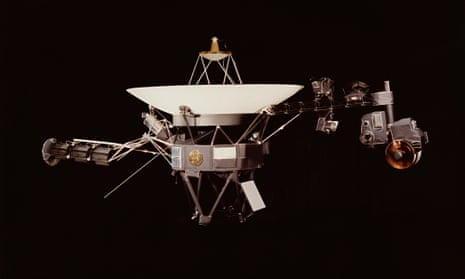
40 years and counting: the team behind Voyager’s space odyssey
In 1977, Voyager 1 and 2 started their one-way journey across our galaxy, travelling a million miles a day. Jonathan Margolis meets the dedicated team keeping the craft moving
O n a chilly March morning, Steve Howard, aged 65, is at work in his office on the northern edge of Pasadena, California. Two computer screens are squeezed on to his corner desk along with family photos, a tissue box and tins of Altoids Curiously Strong Peppermints. The office is in a quiet business park by a workaday main road. Next to it is a McDonald’s, where people linger for hours over a $1 coffee, seemingly to keep warm. Over the road there’s a scruffier burger joint, Jim’s, with an M missing from its sign – and, visible from Howard’s window, a landscaping supplies yard.
If the few people walking by on West Woodbury Road, Altadena, or popping into the landscaping place for some patio paving slabs were to peer into Howard’s office, they might guess, seeing the graph-covered twin screens and a third PC at the other end of the desk, that he was, perhaps, a financial adviser or a day trader. But what Steve Howard is actually doing makes this very ordinary all-American scene quite extraordinary.
Howard is a Nasa mission controller. He is sending instructions to a probe in interstellar space, 12 billion miles from Earth, beyond Pluto and escaping our Solar System at 1 million miles a day. The 815kg craft, Voyager 1 , is one of two identical machines that for many years now have been the furthest human-made objects from Earth. Howard’s computer code takes 17 hours at the speed of light to reach Voyager 1, the furthest travelled. Voyager 2, which is leaving the solar system in a different direction, is 3bn miles closer. The responses, from transmitters on the twin probes running 23 watts of power – have the power of a billionth of a billionth of a watt by the time they reach Earth.
“So here, see, I have Voyager 1’s status and information up, at least as it was 17 hours ago,” Howard explains. “Right now I’m connected to our Canberra station, and these are seven commands, set to radiate one every five minutes starting 30 minutes from now. They’re to verify that the spacecraft can receive and reset its timer. Such is the speed of light, I will not get confirmation that all is OK until late tomorrow night, but it will have entailed a 25bn-mile round trip, so that’s not too bad.”
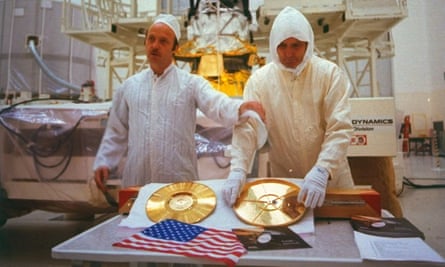
It is no hyperbole to say, then, that the man tapping away at his keyboard on the office park next to McDonald’s is a key figure in the greatest-ever feat of human exploration. There was nothing like the Voyager 1 and 2 missions to the outer planets before they launched in 1977, and although three outer planet probes launched last decade are still on mission, no new ventures into deep space are planned.
Space exploration tends to be more inward looking today than in the so-called Space Age. The famous Curiosity rover is of course still working wonders on Mars, but almost all the US’s coming spacecraft will be restricted to studying our own planet, with special attention to environmental issues. The Voyagers and the people like Howard who still work on them full-time – having, in many cases, done so their entire adult life – are from a different era, when budgets were unrestrained, audaciousness (and showing off to the Soviets) was in vogue and the environment was a concern only for hippies.
Voyager’s spindly limbed, Transit-van-sized machines have been travelling at around 37,000mph for almost 38 years. When they were launched, wooden-framed Morris 1000 Traveller cars had only recently stopped being produced by British Leyland in Oxford. The Voyagers’ on-board computers are early 1970s models that were advanced then but are puny now – an iPhone’s computer is some 200,000 times faster and has about 250,000 times more memory than Voyager’s hardware.
The Voyager mission’s early 70s-inspired and -equipped trip, originally meant to last four years, took the craft initially to Jupiter, then Saturn, then, as a bonus since everything was working well, to Uranus and finally Neptune, after which they spun off into their journey around the Milky Way. Against all expectations their vintage electronics and thrusters are still, mostly, working in the intense -253C cold of outer space. What’s more, their sensors are sending data all day every day, as some will continue to do until 2036. That said, by 2025 almost all the instruments sending worthwhile scientific information will be turned off as the ships’ tiny plutonium-238 power sources dwindle.
The on-board camera on each Voyager, for instance, was deactivated to save power 25 years ago last Valentine’s Day. This was after Voyager 1 took a now-iconic “family portrait” of the solar system from almost 4bn miles out. It captured Neptune, Uranus, Saturn, Jupiter, Venus, Earth (seen, in the late astrophysicist Carl Sagan ’s phrase, as a “pale blue dot”) and the Sun, by then just a tiny point of light. By 2036 the craft will be nearly out of the solar system altogether and will remain dead, although in perfect condition, probably for eternity.
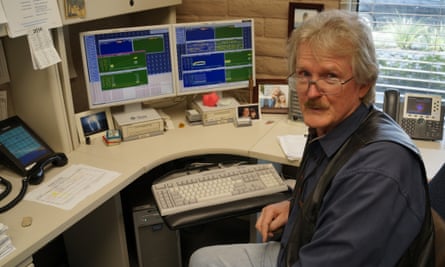
It is the Voyager spacecrafts’ longevity, despite their becoming a bit arthritic in later years, that has led to their Mission Control being moved out to an office park. The problem for Nasa – more correctly for the California Institute of Technology’s Jet Propulsion Laboratory , which runs most robotic missions for Nasa – is that high-profile later expeditions, most notably Curiosity, have used the available space on CalTech’s campus. Proud as JPL is of the amazing Voyager story, the craft are not taking photos or doing a lot of sexy science any more and may not encounter anything of much interest for another 40,000 years, by which time they will be deaf and mute. So, like a great grandfather who stubbornly refuses to do the decent thing, the Earth end of the Voyager programme and the spacecraft’s devoted carers have been put in a somewhat off-piste rest home.
Engineers are not given to emotion, but the romance of this incredible voyage of discovery has, by their own account, kept the ageing mission team together. Even latecomers, who were at school when Voyager was launched, have been working on the same mission for 30 years and more. “I’m in my mid-50s and treat the craft like my ageing parents,” says Suzy Dodd , who was 16 at launch, joined as a graduate student and whose card now proclaims surely one of the cooler job titles in science: Project manager, Voyager Interstellar Mission.
“You treat them with a certain amount of reverence; you know they’re stately spacecraft, venerable senior citizens, and you want to do everything possible for them to have a healthy lifetime,” she says. “You need to help them a bit because things have failed and you want to be careful other things don’t. Most of the engineers here have dedicated their career to this project. They have turned down opportunities for promotions and other things because they like Voyager so much they want to stay with it.”
It is clear talking to Voyager staff that they genuinely love their spacecraft, even though most were too young to see them before they flew, and it is more than possible that the older ones will have died before the Voyagers bleep their last. But as engineers, they have mixed feelings about the most famous aspect of that romance, the “golden record” that each craft carries. This is a gold-covered copper LP, packed with a needle and cartridge (plus instructions), and containing, in groove form, 115 photos from Earth, a selection of natural sounds from surf to whales, music from a variety of cultures and eras (the modern west is represented by Chuck Berry’s “Johnny B Goode”) and spoken greetings in 55 languages, from Akkadian, spoken in Sumer about 6,000 years ago, to Welsh.
Carl Sagan, who had the initial idea for the record, wrote in the 1970s: “The spacecraft will be encountered and the record played only if there are advanced spacefaring civilisations in interstellar space. But the launching of this bottle into the cosmic ocean says something very hopeful about life on this planet.” Sagan’s son Nick, then an infant, now a science-fiction novelist and screenwriter (his credits include Star Trek episodes), recorded the English message: “Hello from the children of planet Earth.” But one sure to make many tear up is the Mandarin: “Hope everyone’s well. We are thinking about you all. Please come here to visit when you have time.” (The messages are on the Voyager website, voyager.jpl.nasa.gov ).
Voyager’s mission controllers are less starry-eyed than Sagan about the golden records. You sense some feel that it was too much of a bow to religious sentiment. Steve Howard is one of the more positive on the record question. “Even though Earth may not be here, some intelligent being could pick it up and detect it. I would say that many of the civilisations are much more advanced and would detect something like that and simply go in and decipher it,” he says.
Suzy Dodd’s view is more typical of the team’s. “I think it’s a great idea to get humans and mankind thinking what-ifs. Let’s send a picture of ourselves vintage 1977 and put it on a spacecraft and send it out there forever. I think it’s done to connect us to the spacecraft more than for an alien running into it. I’m of the opinion that space is very empty and the chances of something finding it are remote. But that doesn’t diminish the fact that we’ve got a little time capsule out there travelling through space and now orbiting around in our galaxy. And that’s us.”
For the mission’s much-honoured chief scientist and spokesman since 1972, CalTech professor Ed Stone, aged 79, the romance of Voyager lies more in what it has discovered since he joined the project aged 36. “Yes, the Space Age was a young man’s game back then,” he says, not a little ruefully, sitting on a park bench on the green university campus. “We all knew we were on a mission of discovery. We just had no idea how much discovery there would be. We just kept finding things we didn’t know were there to be found.
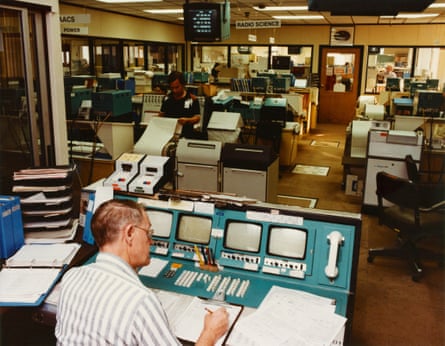
“For example, before Voyager, the only known volcanoes in the solar system were here on Earth. Then we flew by Jupiter’s moon, Io, which had 10 times the volcanic activity of Earth. Ten times! We detected hot lakes of lava on the surface. That was the first major discovery and it set the tone for the rest of the mission. And there are five instruments still working. But by 2025 the last will go off.”
He doesn’t quite add that by then he will be nearly 90, but does say, smiling: “Thing is, if you want to do space experiments, you have to be optimistic that it’s all going to work and that you’re going to find something worth the work. And you have to be patient, because nothing happens fast in space.”
Stone explains how, although it’s widely considered freakish that the Voyager crafts are still working so well – a TV left permanently on since Jim Callaghan’s day would be hardly working today – it’s less surprising to people like him who built them. To anyone familiar with the inside of a vintage radio or TV, the hand-soldered circuit boards, capacitors, transistors, resistors and so on that run a Voyager would look reassuringly familiar, which isn’t the case with a modern computer or phone, whose microchip-studded innards look more like something out of a UFO.
But the parts in Voyager weren’t as ordinary as they looked. Suzy Dodd, a “newcomer” to the project with just over 30 years’ service, has also been intrigued by the spacecraft’s durability. “The robustness is unique,” she says. “If you talk to the older engineers, they’ll say: ‘Well, we were told to make a four-year mission, but we realised if you just used this higher-rated component, it would last twice as long.’ So they did that. They just didn’t tell anybody. The early engineers were very conscious of trying to make this last as long as possible and, quite frankly, being not as forthcoming with information about the types of parts they were using.”
Even so, Ed Stone says, there have been problems. A ground controller’s error in April 1978 meant that Voyager 2 switched itself irretrievably to its back-up receiver – meaning that the craft has been receiving transmissions from Earth on a dodgy back-up radio for almost the entire mission. One of the original thrusters also failed.
For spacecraft 12bn miles from home and in their dotage, the Voyagers are quite tranquil machines today, but they do need watching. As Steve Howard is in his office inputting code in primordial programming language, on the floor of what passes for the main mission control Enrique Medina, 65, is watching streams of engineering data from the craft. A computer engineer, Medina is another of the eight full- and part-time controllers.
“One of us is always on call,” he says. “We’re all connected all the time by our smartphones. We will hear, that way, which engineering channel is out of tolerance and then we will connect from home with secure IDs and special codes, troubleshoot, determine and sometimes fix it from home. Or in some cases, one of us will drive in. That usually happens four to five times a month.
“Sometimes people are away, but we love Voyager so much that though it’s not part of our employment we’ll come in and do it anyway. Attitude control is my sub-system, but if the propulsion or the power needs attention, we all do multiple jobs,” he adds. “I’ve been working on Voyager since the Uranus encounter in 1986, and I will retire when Voyager retires in 2025. My wife doesn’t like that idea at all, as we already have a retirement place by the beach back in Mexico.”
Medina’s devotion to the Voyager is clear to see. “This has been part of my life for so long, and they pay us to do it, so how can you stop doing something you love? I even talk about the spacecraft like it’s a person, especially if it’s my sub-system.”
Steve Howard feels the same. “I just love to think of everything, all those 65,000 parts on each craft, working up there,” he says. “Oh man, it really is something. Every time we come in here, it’s just a gift. And you know that one day it could stop.”
Do these engineers ever think it might be more fun to be at the controls of Curiosity on the CalTech campus a couple of miles away?
“Yes, maybe,” says Medina, “but after so many years, you’re invested. It’s like being married to someone. It would be interesting to go out with Angelina Jolie, but do I want to give up my wife of 44 years, and my grandkids? I don’t think so. I would not give this up for something more interesting or newer.”
For the most part, Voyager is the reality of space – slow, patient science, humdrum perhaps, but real. It’s only a 20-minute drive from Altadena to Hollywood, where brilliant fake versions of space exploration like Christopher Nolan’s recent Interstellar are confected.
But Voyager, starring real people who keep tissues and tins of Altoids on their desks and real buildings rather than set designers’ glamorous fantasies, just happens to be the only real interstellar mission there will probably be in the lifetime of anyone alive today. It is surely one of the most amazing things in human history.
Follow the Observer Magazine on Twitter @ObsMagazine
- The Observer
Comments (…)
Most viewed.
We will keep fighting for all libraries - stand with us!
Internet Archive Audio

- This Just In
- Grateful Dead
- Old Time Radio
- 78 RPMs and Cylinder Recordings
- Audio Books & Poetry
- Computers, Technology and Science
- Music, Arts & Culture
- News & Public Affairs
- Spirituality & Religion
- Radio News Archive

- Flickr Commons
- Occupy Wall Street Flickr
- NASA Images
- Solar System Collection
- Ames Research Center

- All Software
- Old School Emulation
- MS-DOS Games
- Historical Software
- Classic PC Games
- Software Library
- Kodi Archive and Support File
- Vintage Software
- CD-ROM Software
- CD-ROM Software Library
- Software Sites
- Tucows Software Library
- Shareware CD-ROMs
- Software Capsules Compilation
- CD-ROM Images
- ZX Spectrum
- DOOM Level CD

- Smithsonian Libraries
- FEDLINK (US)
- Lincoln Collection
- American Libraries
- Canadian Libraries
- Universal Library
- Project Gutenberg
- Children's Library
- Biodiversity Heritage Library
- Books by Language
- Additional Collections

- Prelinger Archives
- Democracy Now!
- Occupy Wall Street
- TV NSA Clip Library
- Animation & Cartoons
- Arts & Music
- Computers & Technology
- Cultural & Academic Films
- Ephemeral Films
- Sports Videos
- Videogame Videos
- Youth Media
Search the history of over 866 billion web pages on the Internet.
Mobile Apps
- Wayback Machine (iOS)
- Wayback Machine (Android)
Browser Extensions
Archive-it subscription.
- Explore the Collections
- Build Collections
Save Page Now
Capture a web page as it appears now for use as a trusted citation in the future.
Please enter a valid web address
- Donate Donate icon An illustration of a heart shape
Journey Into Space : Operation Luna - All 13 Episodes
Audio with external links item preview, share or embed this item, flag this item for.
- Graphic Violence
- Explicit Sexual Content
- Hate Speech
- Misinformation/Disinformation
- Marketing/Phishing/Advertising
- Misleading/Inaccurate/Missing Metadata
plus-circle Add Review comment Reviews
1,983 Views
9 Favorites
DOWNLOAD OPTIONS
In collections.
Uploaded by FLAC User on October 12, 2022
SIMILAR ITEMS (based on metadata)

Suggested Searches
- Climate Change
- Expedition 64
- Mars perseverance
- SpaceX Crew-2
- International Space Station
- View All Topics A-Z
Humans in Space
Earth & climate, the solar system, the universe, aeronautics, learning resources, news & events.
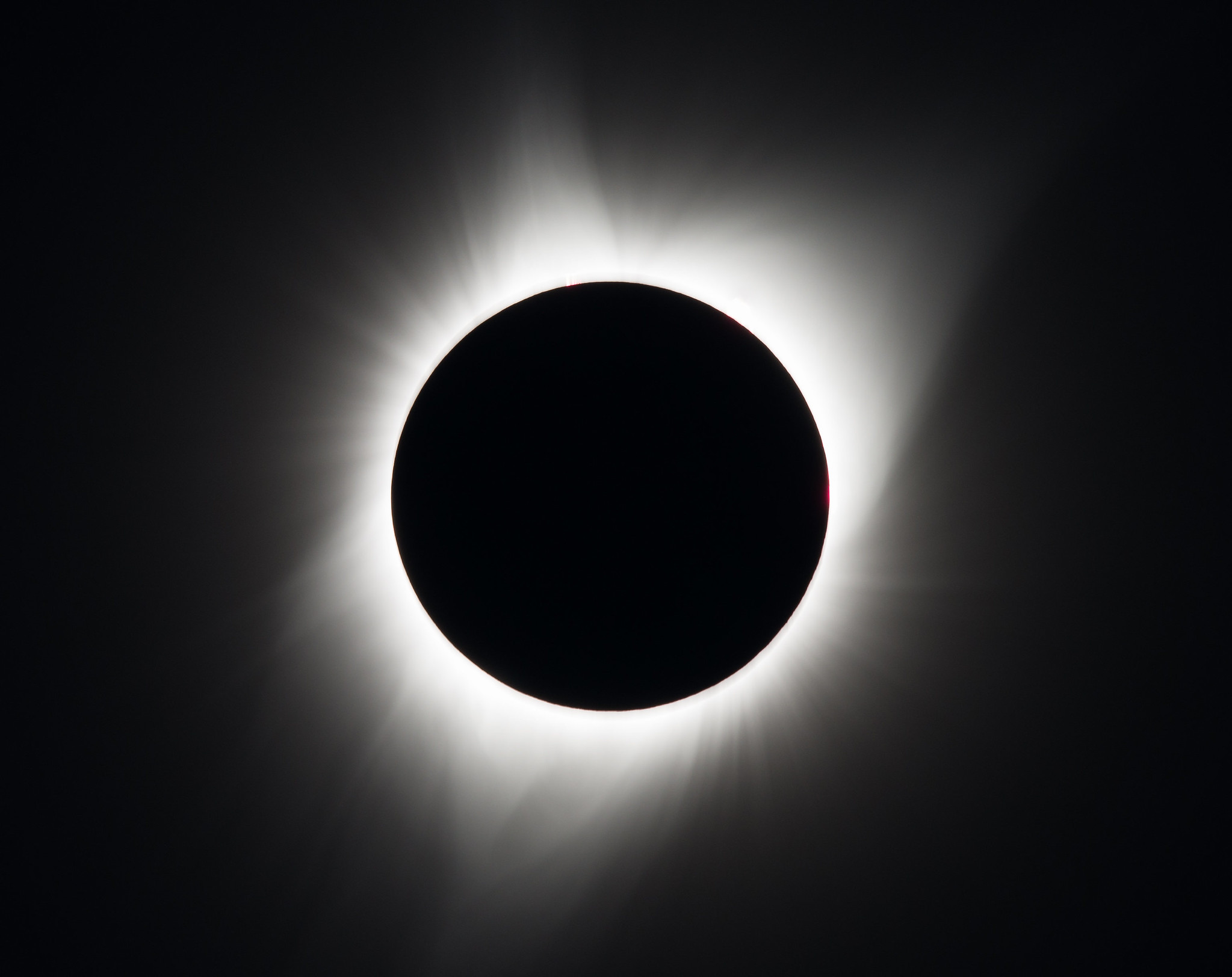
2024 Total Solar Eclipse Broadcast
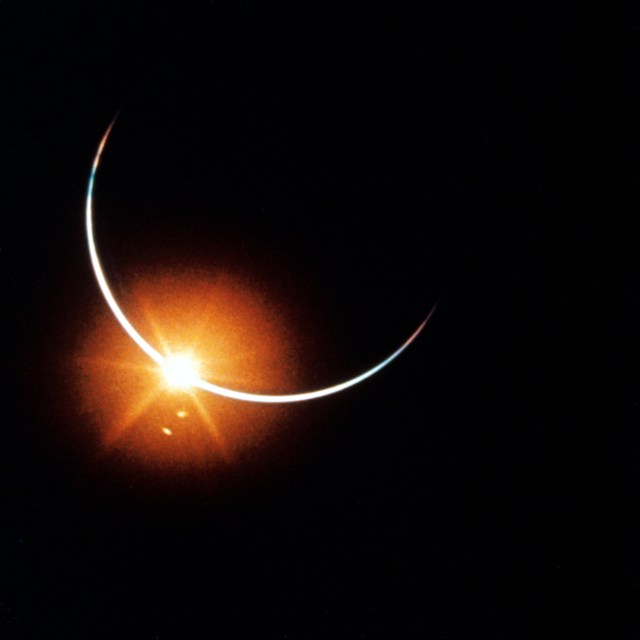
Eclipses Near and Far
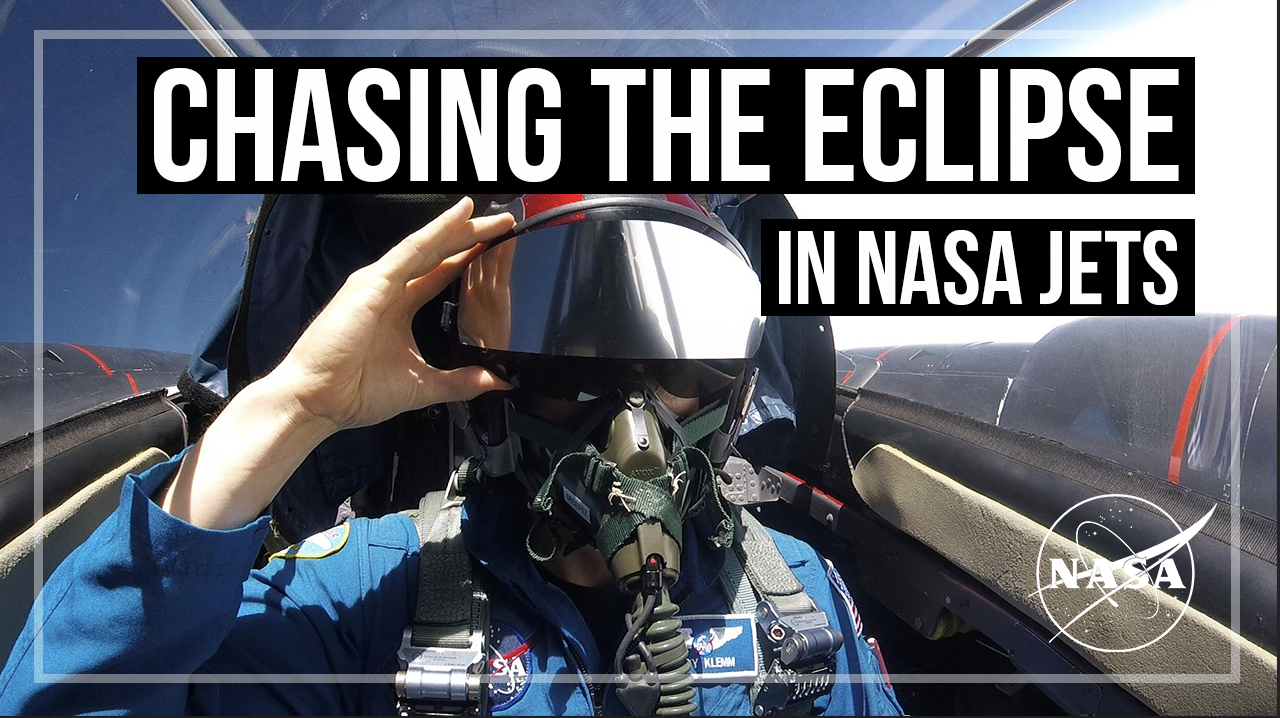
Scientists Pursue the Total Solar Eclipse with NASA Jet Planes
- Search All NASA Missions
- A to Z List of Missions
- Upcoming Launches and Landings
- Spaceships and Rockets
- Communicating with Missions
- James Webb Space Telescope
- Hubble Space Telescope
- Why Go to Space
- Astronauts Home
- Commercial Space
- Destinations
- Living in Space
- Explore Earth Science
- Earth, Our Planet
- Earth Science in Action
- Earth Multimedia
- Earth Science Researchers
- Pluto & Dwarf Planets
- Asteroids, Comets & Meteors
- The Kuiper Belt
- The Oort Cloud
- Skywatching
- The Search for Life in the Universe
- Black Holes
- The Big Bang
- Dark Energy & Dark Matter
- Earth Science
- Planetary Science
- Astrophysics & Space Science
- The Sun & Heliophysics
- Biological & Physical Sciences
- Lunar Science
- Citizen Science
- Astromaterials
- Aeronautics Research
- Human Space Travel Research
- Science in the Air
- NASA Aircraft
- Flight Innovation
- Supersonic Flight
- Air Traffic Solutions
- Green Aviation Tech
- Drones & You
- Technology Transfer & Spinoffs
- Space Travel Technology
- Technology Living in Space
- Manufacturing and Materials
- Science Instruments
- For Kids and Students
- For Educators
- For Colleges and Universities
- For Professionals
- Science for Everyone
- Requests for Exhibits, Artifacts, or Speakers
- STEM Engagement at NASA
- NASA's Impacts
- Centers and Facilities
- Directorates
- Organizations
- People of NASA
- Internships
- Our History
- Doing Business with NASA
- Get Involved
- Aeronáutica
- Ciencias Terrestres
- Sistema Solar
- All NASA News
- Video Series on NASA+
- Newsletters
- Social Media
- Media Resources
- Upcoming Launches & Landings
- Virtual Events
- Sounds and Ringtones
- Interactives
- STEM Multimedia
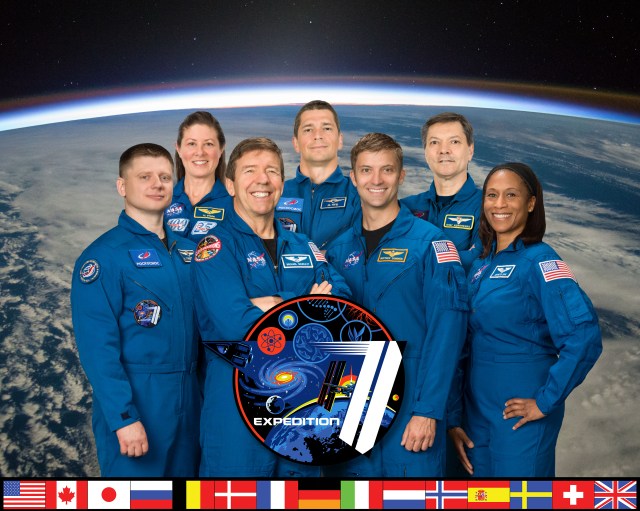
Expedition 71
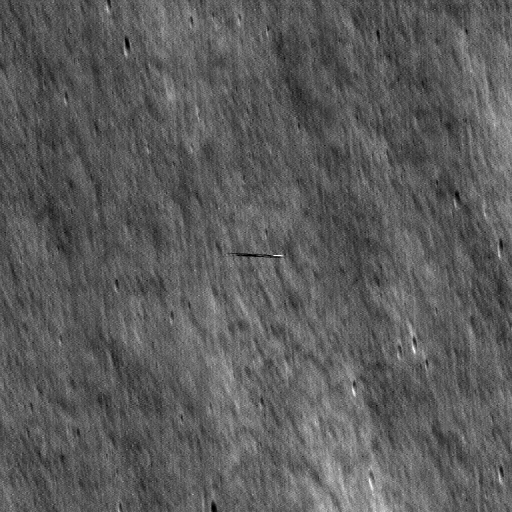
NASA’s LRO Finds Photo Op as It Zips Past SKorea’s Danuri Moon Orbiter
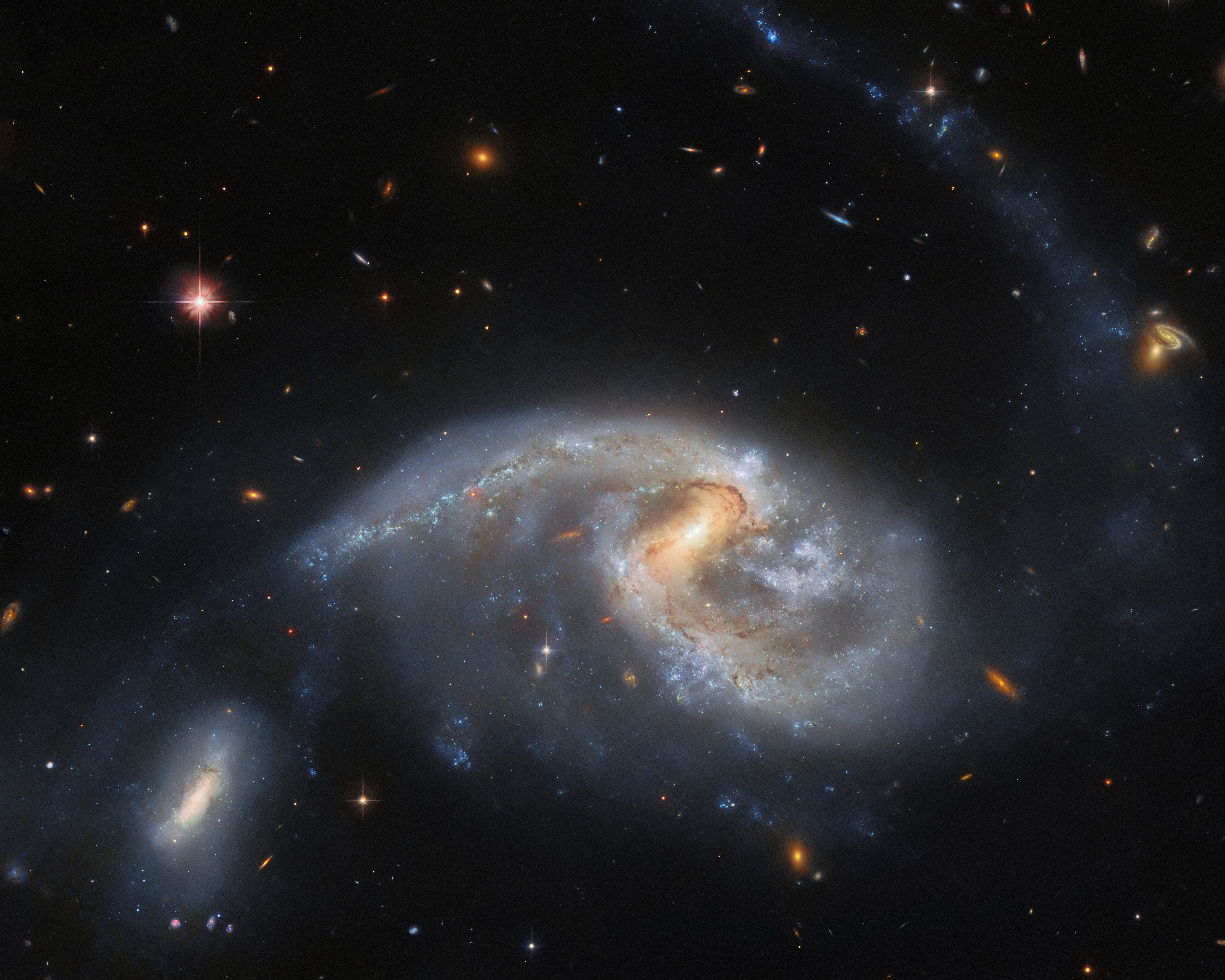

Hubble Peers at Pair of Closely Interacting Galaxies

NASA Astronaut Loral O’Hara, Expedition 70 Science Highlights

Diez maneras en que los estudiantes pueden prepararse para ser astronautas

Optical Fiber Production

How NASA Spotted El Niño Changing the Saltiness of Coastal Waters

Earth Day Toolkit
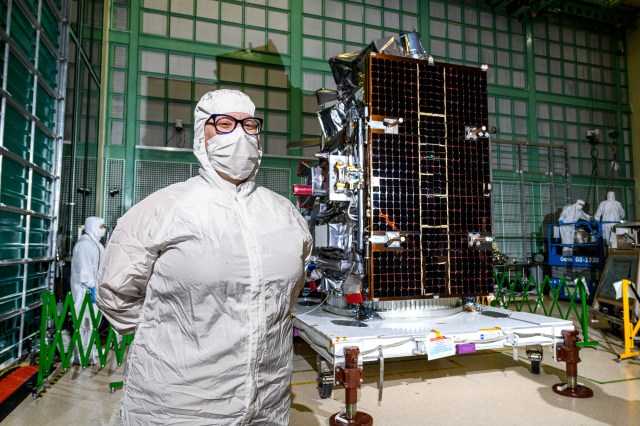
Veronica T. Pinnick Put NASA’s PACE Mission through Its Paces

NASA Names Finalists of the Power to Explore Challenge
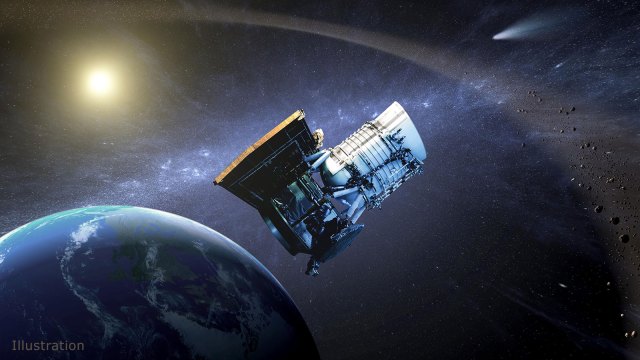
NASA’s NEOWISE Extends Legacy With Decade of Near-Earth Object Data
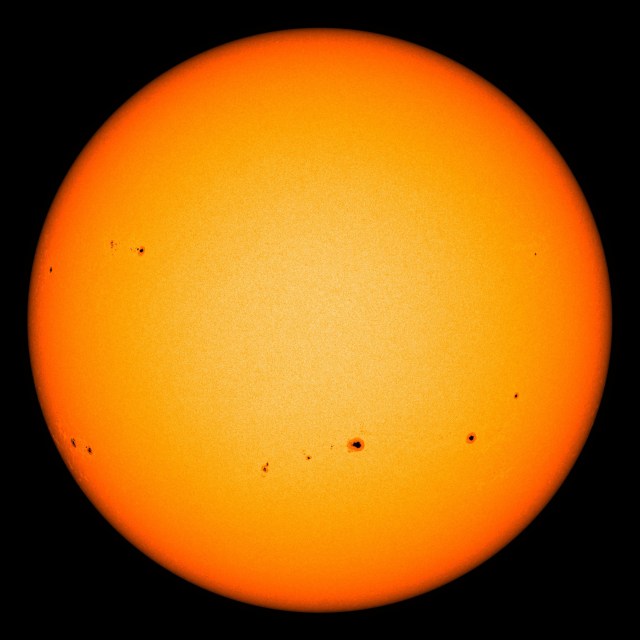
How NASA’s Roman Telescope Will Measure Ages of Stars
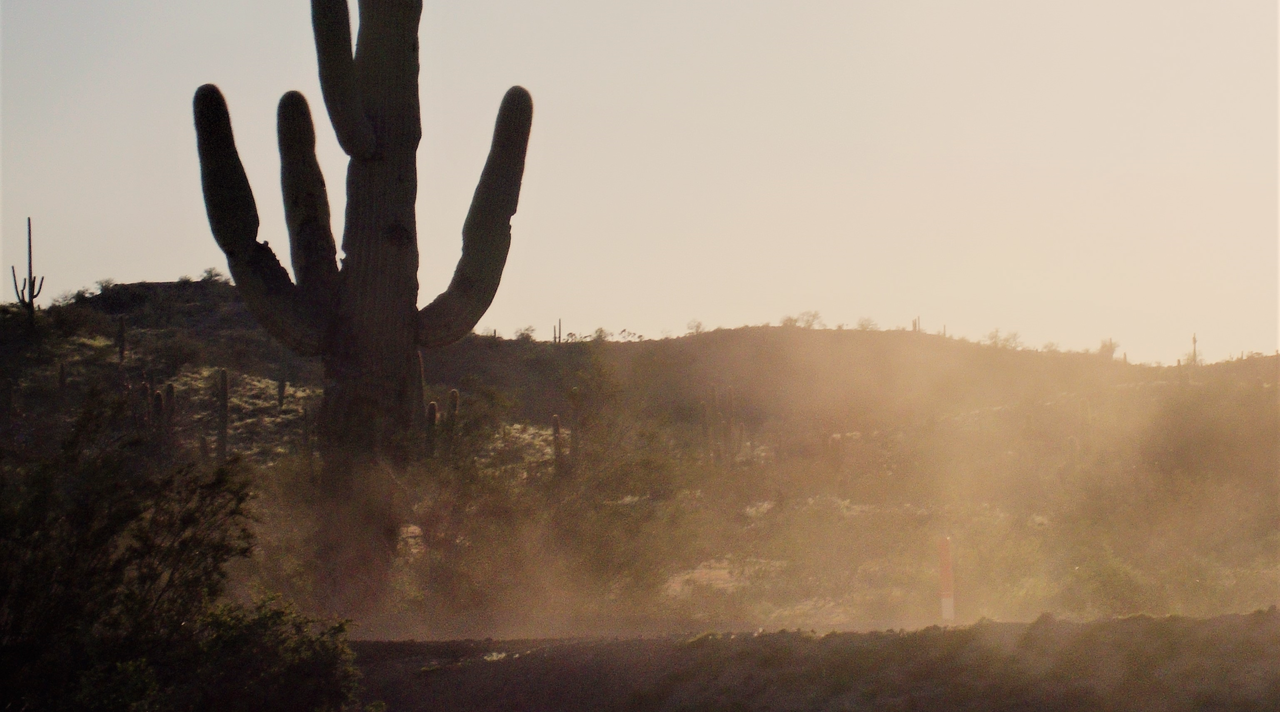
Amendment 8 A.44 Earth Action: Health and Air Quality Applied Sciences Team Final Text and Due Dates.

Introduction to Spectrum

NASA Langley Team to Study Weather During Eclipse Using Uncrewed Vehicles

NASA Noise Prediction Tool Supports Users in Air Taxi Industry

ARMD Solicitations

Tech Today: Synthetic DNA Diagnoses COVID, Cancer

David Woerner

NASA Partnerships Bring 2024 Total Solar Eclipse to Everyone

NASA, Salisbury U. Enact Agreement for Workforce Development
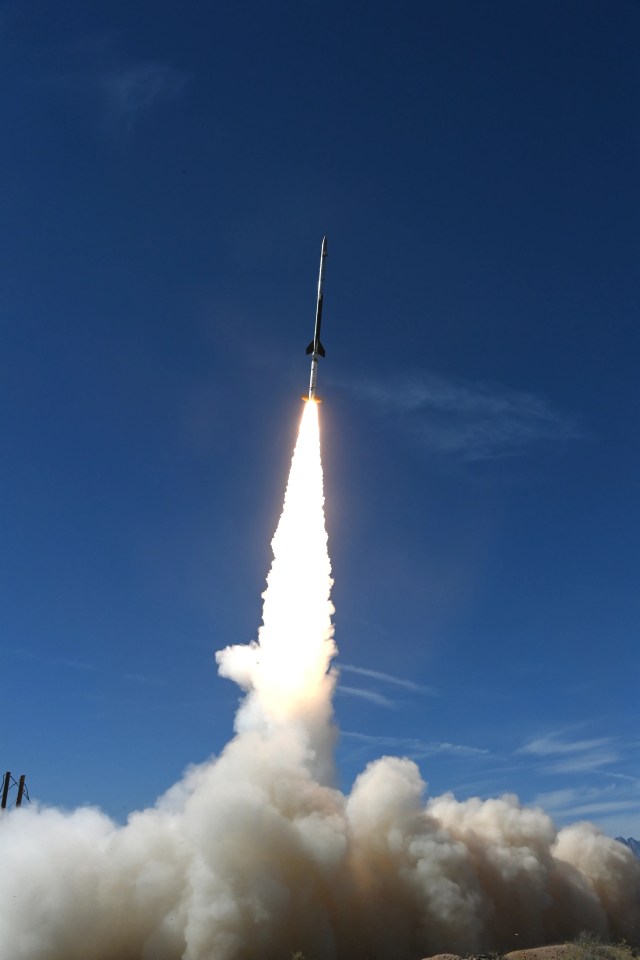
NASA Wallops to Launch Three Sounding Rockets During Solar Eclipse
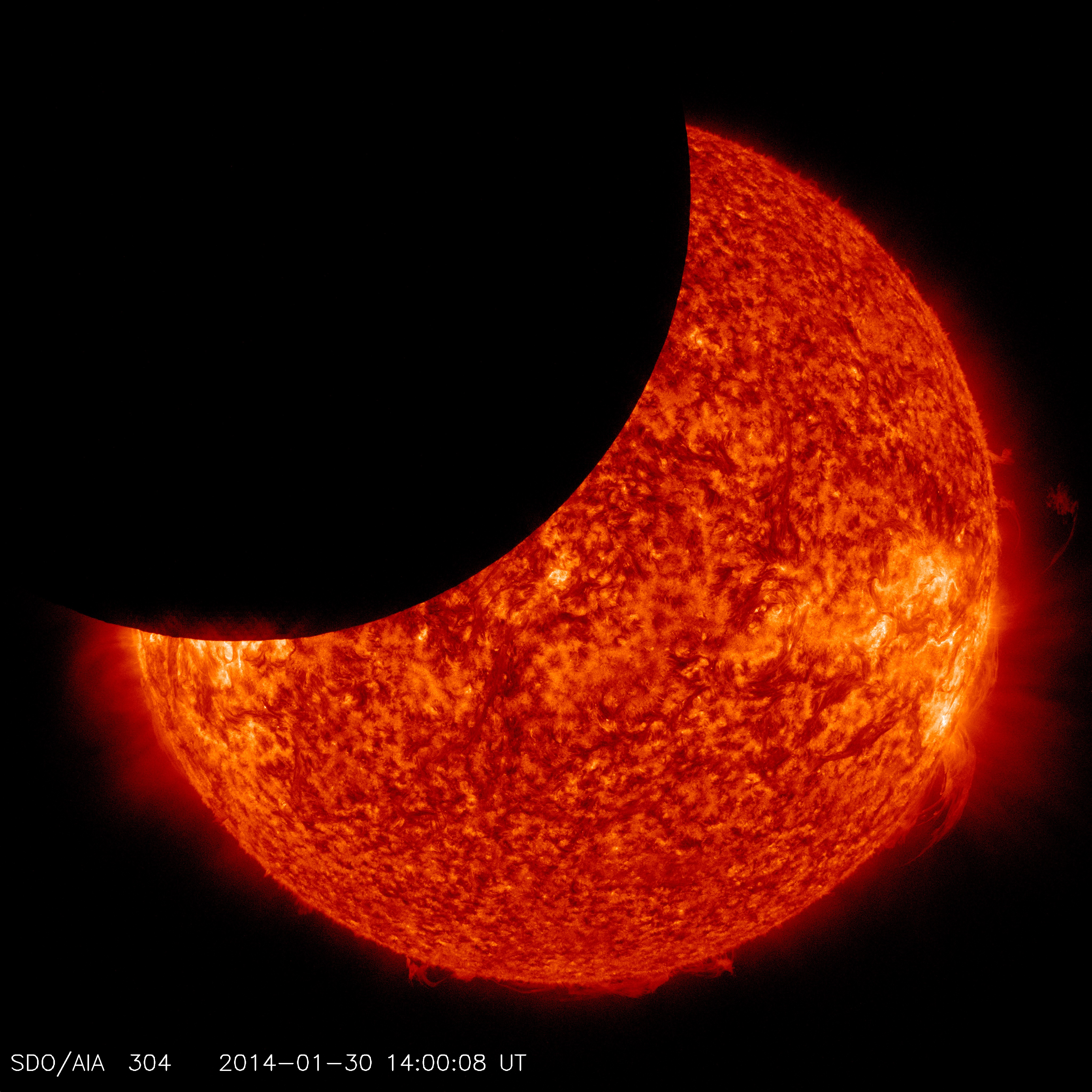
Harnessing the 2024 Eclipse for Ionospheric Discovery with HamSCI

La presentación del X-59 de la NASA personifica la tradición aeronáutica
Nasa spacecraft embarks on historic journey into interstellar space.

NASA’s Voyager 1 spacecraft officially is the first human-made object to venture into interstellar space. The 36-year-old probe is about 12 billion miles (19 billion kilometers) from our sun.
New and unexpected data indicate Voyager 1 has been traveling for about one year through plasma, or ionized gas, present in the space between stars. Voyager is in a transitional region immediately outside the solar bubble, where some effects from our sun are still evident. A report on the analysis of this new data, an effort led by Don Gurnett and the plasma wave science team at the University of Iowa, Iowa City, is published in Thursday’s edition of the journal Science.
“Now that we have new, key data, we believe this is mankind’s historic leap into interstellar space,” said Ed Stone, Voyager project scientist based at the California Institute of Technology, Pasadena. “The Voyager team needed time to analyze those observations and make sense of them. But we can now answer the question we’ve all been asking — ‘Are we there yet?’ Yes, we are.”
Voyager 1 first detected the increased pressure of interstellar space on the heliosphere, the bubble of charged particles surrounding the sun that reaches far beyond the outer planets, in 2004. Scientists then ramped up their search for evidence of the spacecraft’s interstellar arrival, knowing the data analysis and interpretation could take months or years.
Voyager 1 does not have a working plasma sensor, so scientists needed a different way to measure the spacecraft’s plasma environment to make a definitive determination of its location. A coronal mass ejection, or a massive burst of solar wind and magnetic fields, that erupted from the sun in March 2012 provided scientists the data they needed. When this unexpected gift from the sun eventually arrived at Voyager 1’s location 13 months later, in April 2013, the plasma around the spacecraft began to vibrate like a violin string. On April 9, Voyager 1’s plasma wave instrument detected the movement. The pitch of the oscillations helped scientists determine the density of the plasma. The particular oscillations meant the spacecraft was bathed in plasma more than 40 times denser than what they had encountered in the outer layer of the heliosphere. Density of this sort is to be expected in interstellar space.
The plasma wave science team reviewed its data and found an earlier, fainter set of oscillations in October and November 2012. Through extrapolation of measured plasma densities from both events, the team determined Voyager 1 first entered interstellar space in August 2012.
“We literally jumped out of our seats when we saw these oscillations in our data — they showed us the spacecraft was in an entirely new region, comparable to what was expected in interstellar space, and totally different than in the solar bubble,” Gurnett said. “Clearly we had passed through the heliopause, which is the long-hypothesized boundary between the solar plasma and the interstellar plasma.”
The new plasma data suggested a timeframe consistent with abrupt, durable changes in the density of energetic particles that were first detected on Aug. 25, 2012. The Voyager team generally accepts this date as the date of interstellar arrival. The charged particle and plasma changes were what would have been expected during a crossing of the heliopause.
“The team’s hard work to build durable spacecraft and carefully manage the Voyager spacecraft’s limited resources paid off in another first for NASA and humanity,” said Suzanne Dodd, Voyager project manager, based at NASA’s Jet Propulsion Laboratory (JPL), Pasadena, Calif. “We expect the fields and particles science instruments on Voyager will continue to send back data through at least 2020. We can’t wait to see what the Voyager instruments show us next about deep space.”
Voyager 1 and its twin, Voyager 2, were launched 16 days apart in 1977. Both spacecraft flew by Jupiter and Saturn. Voyager 2 also flew by Uranus and Neptune. Voyager 2, launched before Voyager 1, is the longest continuously operated spacecraft. It is about 9.5 billion miles (15 billion kilometers) away from our sun.
Voyager mission controllers still talk to or receive data from Voyager 1 and Voyager 2 every day, though the emitted signals are currently very dim, at about 23 watts — the power of a refrigerator light bulb. By the time the signals get to Earth, they are a fraction of a billion-billionth of a watt. Data from Voyager 1’s instruments are transmitted to Earth typically at 160 bits per second, and captured by 34- and 70-meter NASA Deep Space Network (DSN) stations. Traveling at the speed of light, a signal from Voyager 1 takes about 17 hours to travel to Earth. After the data are transmitted to JPL and processed by the science teams, Voyager data are made publicly available.
“Voyager has boldly gone where no probe has gone before, marking one of the most significant technological achievements in the annals of the history of science, and adding a new chapter in human scientific dreams and endeavors,” said John Grunsfeld, NASA’s associate administrator for science in Washington. “Perhaps some future deep space explorers will catch up with Voyager, our first interstellar envoy, and reflect on how this intrepid spacecraft helped enable their journey.”
Scientists do not know when Voyager 1 will reach the undisturbed part of interstellar space where there is no influence from our sun. They also are not certain when Voyager 2 is expected to cross into interstellar space, but they believe it is not very far behind.
JPL built and operates the twin Voyager spacecraft. The Voyagers Interstellar Mission is a part of NASA’s Heliophysics System Observatory, sponsored by the Heliophysics Division of NASA’s Science Mission Directorate in Washington. NASA’s DSN, managed by JPL, is an international network of antennas that supports interplanetary spacecraft missions and radio and radar astronomy observations for the exploration of the solar system and the universe. The network also supports selected Earth-orbiting missions.
The cost of the Voyager 1 and Voyager 2 missions — including launch, mission operations and the spacecraft’s nuclear batteries, which were provided by the Department of Energy — is about $988 million through September.
For a sound file of the oscillations detected by Voyager in interstellar space, animations and other information, visit:
For an image of the radio signal from Voyager 1 on Feb. 21 by the National Radio Astronomy Observatory’s Very Long Baseline Array, which links telescopes from Hawaii to St. Croix, visit:
Protected: Milky Way’s Black Hole Was “Birth Cry” of Radio Astronomy
Dwayne Brown Headquarters, Washington 202-358-1726 [email protected] Jia-Rui C. Cook Jet Propulsion Laboratory, Pasadena, Calif. 818-354-0850 [email protected]
45 Years Ago: Voyager 2 Begins Its Epic Journey to the Outer Planets and Beyond
The ambitious mission took advantage of a rare alignment of the outer planets before continuing its journey into interstellar space.
Forty-five years ago, the Voyager 2 spacecraft left Earth to begin an epic journey that continues to this day. The first of a pair of spacecraft, Voyager 2 lifted off on Aug. 20, 1977. NASA’s Jet Propulsion Laboratory in Southern California manages the spacecraft on their missions to explore the outer planets and beyond. Taking advantage of a rare planetary alignment to use the gravity of one planet to redirect the spacecraft to the next, the Voyagers initially targeted only Jupiter and Saturn, but Voyager 2 went on to explore Uranus and Neptune as well. The Voyagers carried sophisticated instruments to conduct their in-depth explorations of the outer planets. Both spacecraft continue to return data as they make their way out of our solar system and enter interstellar space.

Proposed trajectories for the Thermoelectric Outer Planet Spacecraft Grand Tour, canceled in 1971.
In the 1960s, mission designers at JPL noted that the next alignment of the outer planets that occurs only every 175 years would happen in the late 1970s. Technology had advanced sufficiently that spacecraft could take advantage of this rare alignment to fly by Jupiter and use its gravity to bend their trajectories to visit Saturn, and repeat the process to also visit Uranus, Neptune, and Pluto. Launching several missions to visit each planet individually would take much longer and cost much more. The original plan to send two pairs of Thermoelectric Outer Planet Spacecraft on these Grand Tours proved too costly, leading to cancellation in 1971. The next year, NASA approved a scaled-down version of the project to launch a pair of Mariner-class spacecraft in 1977 to explore just Jupiter and Saturn. On March 7, 1977, NASA Administrator James C. Fletcher announced the renaming of these Mariner Jupiter/Saturn 1977 spacecraft as Voyager 1 and 2. Scientists held out hope that one of them could ultimately visit Uranus and Neptune, thereby fulfilling most of the original Grand Tour’s objectives. Pluto would have to wait many more years for its first visit.

From left: a 1975 illustration of the Mariner Jupiter/Saturn 1977 mission; a model of the Voyager spacecraft; the Aug. 20, 1977, launch of Voyager 2 at Cape Canaveral in Florida.
Each Voyager carried a suite of 11 instruments to study the planets during each encounter and to learn more about interplanetary space in the outer reaches of the solar system, including:
- An imaging science system consisting of narrow-angle and wide-angle cameras to photograph the planet and its satellites.
- A radio science system to determine the planet’s physical properties.
- An infrared interferometer spectrometer to investigate local and global energy balance and atmospheric composition.
- An ultraviolet spectrometer to measure atmospheric properties.
- A magnetometer to analyze the planet’s magnetic field and interaction with the solar wind.
- A plasma spectrometer to investigate microscopic properties of plasma ions.
- A low energy charged particle device to measure fluxes and distributions of ions.
- A cosmic ray detection system to determine the origin and behavior of cosmic radiation.
- A planetary radio astronomy investigation to study radio emissions from Jupiter.
- A photopolarimeter to measure the planet’s surface composition.
- A plasma wave system to study the planet’s magnetosphere.

From left: a schematic of the Voyager spacecraft showing the science experiments; trajectories of the Voyagers through the solar system.
Voyager 2 left Earth first, lifting off on Aug. 20, 1977, atop a Titan IIIE-Centaur rocket from Launch Complex 41 at Cape Canaveral Air Force Station, now Cape Canaveral Space Force Station, in Florida. Although its twin launched two weeks later, it traveled on a faster trajectory and arrived at Jupiter four months earlier. Voyager 2 successfully crossed the asteroid belt between Dec. 10, 1977, and Oct. 21, 1978. In April 1978, its primary radio receiver failed, and it has been operating on its backup receiver ever since.

Voyager 2 images of Jupiter, left, and Saturn with its rings and several of its moons.
Voyager 2 conducted its observations of Jupiter between April 24 and Aug. 5, 1979, making its closest approach of 350,000 miles above the planet’s cloud tops on July 9. The spacecraft returned 17,000 images of Jupiter, many of its satellites, and confirmed Voyager 1’s discovery of a thin ring encircling the planet. Its other instruments returned information about Jupiter’s atmosphere and magnetic field. Jupiter’s massive gravity field bent the spacecraft’s trajectory, accelerating it toward Saturn.
Voyager 2 began its long-range observations of the ringed planet on June 5, 1981, passed within 26,000 miles of the planet’s cloud tops on Aug. 26, and concluded its studies on Sept. 4. The spacecraft captured 16,000 photographs of the planet, its rings, and many of its known satellites. It discovered several new ones, and its instruments returned data about Saturn’s atmosphere. Saturn’s gravity sent Voyager 2 on to Uranus.

Voyager 2 images of Uranus, left, and Neptune.
Voyager 2 carried out the first close-up observations of Uranus between Nov. 4, 1985, and Feb. 25, 1986, making its closest approach of 50,700 miles above the planet’s cloud tops on Jan. 24, 1986. It returned more than 7,000 photographs of the planet, its rings and moons, discovering two new rings and 11 new moons. The spacecraft’s instruments returned data about the planet’s atmosphere and its unusual magnetic field, tilted by 59 degrees compared to its rotational axis and offset from the planet’s center by about one-third of the planet’s radius.
Voyager 2 took advantage of Uranus’ gravity to send it on to its last planetary destination, Neptune. The spacecraft conducted the first close-up observations of the eighth planet between June 5 and Oct. 2, 1989, making its flyby just 3,408 miles above its north pole on Aug. 25, its closest approach to any planet since leaving Earth in 1977. This trajectory allowed Voyager 2 to observe Neptune’s large moon Triton, the last solid object it explored. During the encounter, it returned more than 9,000 images of the planet, its atmosphere, dark rings, and moons, discovering six new moons. Like Uranus, Voyager 2’s instruments revealed that Neptune has an unusual magnetic field, not only tilted 47 degrees from the planet’s axis but also significantly offset from the planet’s center.

An illustration showing the position of the Voyager 1 and 2 spacecraft outside of the heliosphere, a protective bubble created by the sun that extends well past the orbit of Neptune.
Following its reconnaissance of Neptune, Voyager 2 began its Interstellar Mission extension that continues to this day. Over the years, several of the spacecraft’s instruments have been turned off to conserve power, beginning with the imaging system in 1998, but it continues to return data about cosmic rays and the solar wind. On Nov. 5, 2018, six years after its twin, Voyager 2 crossed the heliopause, the boundary between the heliosphere – the bubble-like region of space created by the Sun – and the interstellar medium. Currently, Voyager 2 continues its mission, more than 12 billion miles from Earth, so distant that a signal from the spacecraft takes 18 hours to reach Earth, and just as long for a return signal to reach the craft. Engineers expect that Voyager 2 will continue to return data until about 2025. And just in case an alien intelligence finds it one day, Voyager 2 like its twin carries a gold-plated record that contains information about its home planet, including recordings of terrestrial sounds, music, and greetings in 55 languages. Engineers at NASA thoughtfully included instructions on how to play the record.

The gold disc carried by each Voyager.
News Media Contact
Calla Cofield
Jet Propulsion Laboratory, Pasadena, Calif.
626-808-2469
Written by John Uri, NASA’s Johnson Space Center
- Cast & crew
- User reviews
Journey to Space

An unveiling of a new era of unprecedented deep space exploration in dramatic giant screen film format. An unveiling of a new era of unprecedented deep space exploration in dramatic giant screen film format. An unveiling of a new era of unprecedented deep space exploration in dramatic giant screen film format.
- Mark Krenzien
- Lindsay Aitchison
- Serena Aunon-Chancellor
- Chris Ferguson
- 6 User reviews
- 6 Critic reviews

- (as Serena Aunon)

- Featured Tourist
- (uncredited)
- All cast & crew
- Production, box office & more at IMDbPro
More like this

User reviews 6
- ginexmachina
- Mar 23, 2019
- How long is Journey to Space? Powered by Alexa
- March 26, 2015 (Denmark)
- United States
- Official Facebook
- Official Google+
- Viaje al espacio. Próxima parada: Marte
- Giant Screen Films
- Liquid Pictures
- See more company credits at IMDbPro
Technical specs
- Runtime 45 minutes
- Dolby Atmos
Related news
Contribute to this page.

- See more gaps
- Learn more about contributing
More to explore

Recently viewed
Journey into Space
- 1.1 Etymology
- 1.2.1 Synonyms
- 1.2.2 See also
English [ edit ]
Etymology [ edit ].
From the 1953–1958 BBC Radio science fiction programme Journey into Space .
Proper noun [ edit ]
- 2006 , Peter Tate, SeaSickness , Lulu, page 30 : It had been an enormous Rabelaisian bender which had taken place in the old teaching hospital in Newcastle. Huge quantities of Newcastle Brown ale, an extremely dangerous dark amber fluid known locally as ‘ journey into space ’ had been consumed.
- 2012 , Ralph Hill, Simon's Return , AuthorHouse, page 168 : His other memory had been hearing people talking about ‘a journey into space ’ which was how they described their local beer, Newcastle Brown! He didn’t drink, he wasn’t old enough but he remembered the saying. He had even seen the horse drawn drays carrying barrels of beer from pub to pub. ‘ Journey into Space ’ after an Allibone lecture was something you didn’t forget.
- 2013 , Mike Brown, Thrilling, Sweet and Rotten , AuthorHouse, page 27 : Bobby taught woodwork at the High School, and was one of the few teachers Stan got on with. He was a Geordie exile, who still referred to Newcastle Brown Ale as " Journey into Space ".
Synonyms [ edit ]
- Broonale ( Geordie )
- Broon ( Geordie )
- Dog ( Geordie , idiomatic )
- Newkie Brown
See also [ edit ]
- English lemmas
- English proper nouns
- English uncountable nouns
- English multiword terms
- Geordie English
- English slang
- English terms with quotations
- English terms with non-redundant non-automated sortkeys
- English entries with topic categories using raw markup
- Quotation templates to be cleaned
Navigation menu

IMAGES
VIDEO
COMMENTS
Journey Into Space is a BBC Radio science fiction programme written by BBC producer Charles Chilton.It was the last UK radio programme to attract a bigger evening audience than television. Originally, four series were produced (the fourth was a remake of the first), which was translated into 17 languages (including Hindi, Turkish and Dutch) and broadcast in countries worldwide (including ...
Yuri Alekseyevich Gagarin (9 March 1934 - 27 March 1968) was a Soviet pilot and cosmonaut who, aboard the first successful crewed spaceflight, became the first human to journey into outer space.Travelling on Vostok 1, Gagarin completed one orbit of Earth on 12 April 1961, with his flight taking 108 minutes. By achieving this major milestone for the Soviet Union amidst the Space Race, he ...
Journey Into Space is a BBC Radio science fiction programme written by BBC producer Charles Chilton. It was the last UK radio programme to attract a bigger evening audience than television. Originally, four series were produced , which was translated into 17 languages and broadcast in countries worldwide . Chilton later wrote three best-selling novels and several comic strip stories based upon ...
Journey Into Space is a BBC Radio science fiction programme, written by BBC producer Charles Chilton. It was the last radio programme in the UK to attract a bigger evening audience than television. Originally, four series were produced (the fourth being a remake of the first), which went on to be translated into 17 languages (including Hindustani, Turkish and Dutch) and broadcast worldwide ...
Journey Into Space was a BBC Radio science fiction serial first broadcast from 1953 to 1956. Three series were originally broadcast, all written and produced by Charles Chilton. The first series, Operation Luna, was originally titled Journey To The Moon and broadcast in 1953/4. The first four episodes, set on Earth, were not popular with ...
Journey Into Space is a BBC Radio science fiction programme written by BBC producer Charles Chilton. It was the last UK radio programme to attract a bigger evening audience than television. Originally, four series were produced (the fourth was a remake of the first), which were translated into 17 languages (including Hindi, Turkish and Dutch ...
This is the story of 4 intrepid explorers travelling to the moon. However, not everything goes to plan. With power failure, hearing strange music and an enco...
All episodes of Charles Chilton - Journey into Space. The Return from Mars. Captain Jet Morgan and his Discovery crew are hurtling towards 2026.
In his book, Beyond: The Astonishing Story of the First Human to Leave Our Planet and Journey into Space, Stephen Walker wrote that control of space was both an ideological quest and a military ...
America's air force treats 50 miles (roughly 80km) as the edge of space, a definition which allowed it to give astronaut wings to five pilots of its X-15 experimental rocket plane in the 1960s.
BBC Radio science fiction drama serial written by Charles Chilton, first broadcast in 1958 as the series Operation Luna, followed by sequels from the same author including two series of Space Force, plus a sequel by Julian Simpson.Our square-jawed heroes confront the dangers of deep space and boldly charge towards another cliffhanger ending, courageously ignoring the mortal danger, and ...
Journey into Space. Journey into Space was a BBC radio series written by Charles Chilton. It was originally broadcast from 1953 to 1958 but set in the distant future of 1965 to 1972. It was the last British radio programme to achieve higher ratings than its television rival.
Space exploration is the use of astronomy and space technology to explore outer space. [1] While the exploration of space is currently carried out mainly by astronomers with telescopes, its physical exploration is conducted both by uncrewed robotic space probes and human spaceflight. Space exploration, like its classical form astronomy, is one ...
Howard is a Nasa mission controller. He is sending instructions to a probe in interstellar space, 12 billion miles from Earth, beyond Pluto and escaping our Solar System at 1 million miles a day.
Journey Into Space : Operation Luna Parts 1 to 13. A science fiction radio serial from the 1950s, featuring Captain Jet Morgan and his crew. First broadcast in 1958, the serial is set in the far distant future of 1965. The astronauts are on a mission to make the first manned landing on the Moon.
NASA. Sep 12, 2013. RELEASE 13-280. NASA's Voyager 1 spacecraft officially is the first human-made object to venture into interstellar space. The 36-year-old probe is about 12 billion miles (19 billion kilometers) from our sun. New and unexpected data indicate Voyager 1 has been traveling for about one year through plasma, or ionized gas ...
The ambitious mission took advantage of a rare alignment of the outer planets before continuing its journey into interstellar space. Forty-five years ago, the Voyager 2 spacecraft left Earth to begin an epic journey that continues to this day. The first of a pair of spacecraft, Voyager 2 lifted off on Aug. 20, 1977.
Adventure Thru Inner Space was an attraction in Disneyland's Tomorrowland, presented by Monsanto Company. It was the first attraction to utilize Disney's Omnimover system. [1] The ride simulated shrinking guests to the size smaller than an atom (the "inner space") before taking a tour of snowflakes at molecular and atomic levels.
Bruce C. Murray was born November 30, 1931 in New York, NY. He is a professor emeritus of planetary science and geology at Caltech and was Director of the Jet Propulsion Laboratory from April 1, 1976 to June 30, 1982. He received his Ph.D. in geology from MIT in 1955 and was employed by Standard Oil of California, the USAF, and the United ...
Journey to Space: Directed by Mark Krenzien. With Lindsay Aitchison, Serena Aunon-Chancellor, Chris Ferguson, Christian Gardner. An unveiling of a new era of unprecedented deep space exploration in dramatic giant screen film format.
Huge quantities of Newcastle Brown ale, an extremely dangerous dark amber fluid known locally as 'journey into space' had been consumed. 2012, Ralph Hill, Simon's Return, AuthorHouse, page 168: His other memory had been hearing people talking about 'a journey into space' which was how they described their local beer, Newcastle Brown! He ...